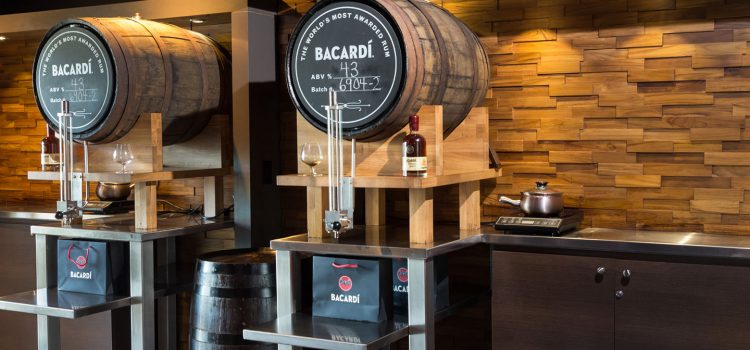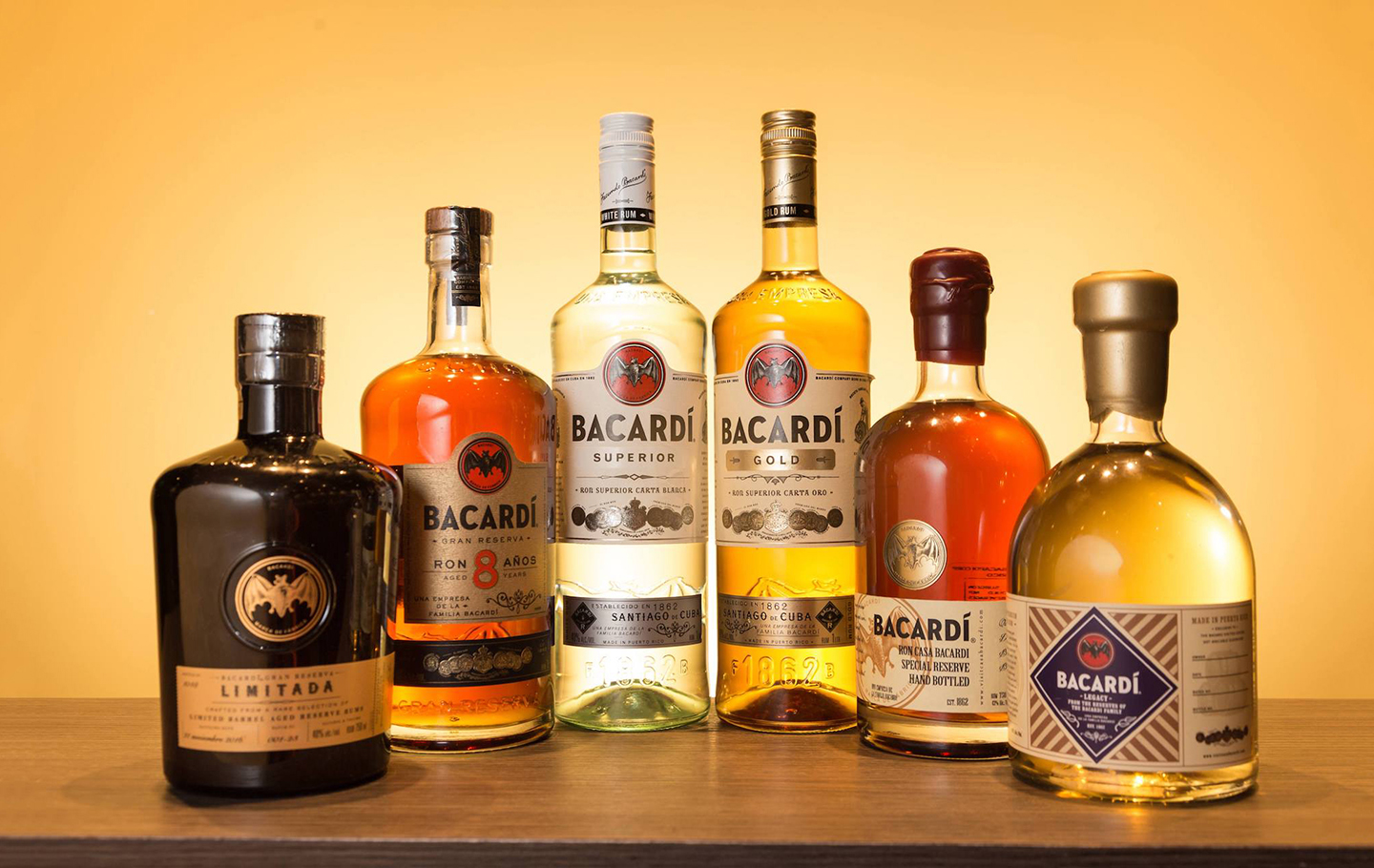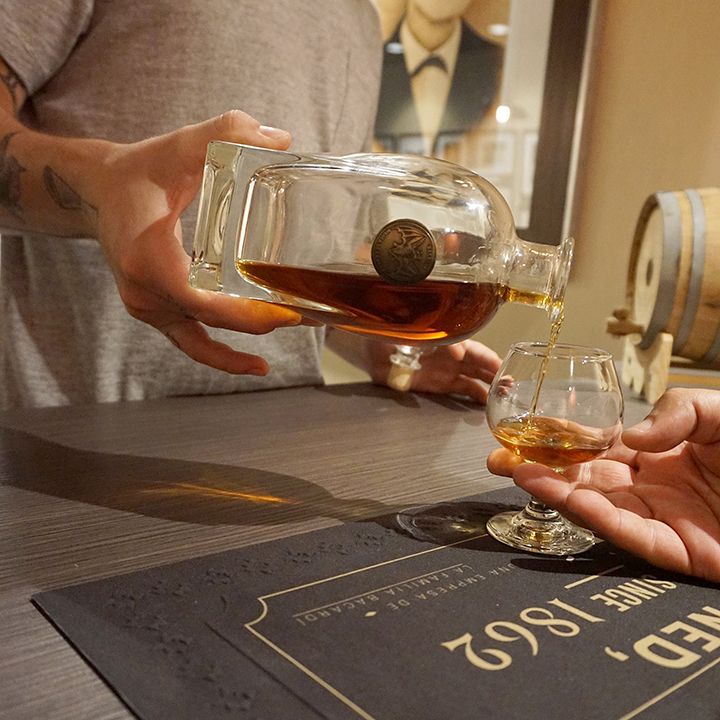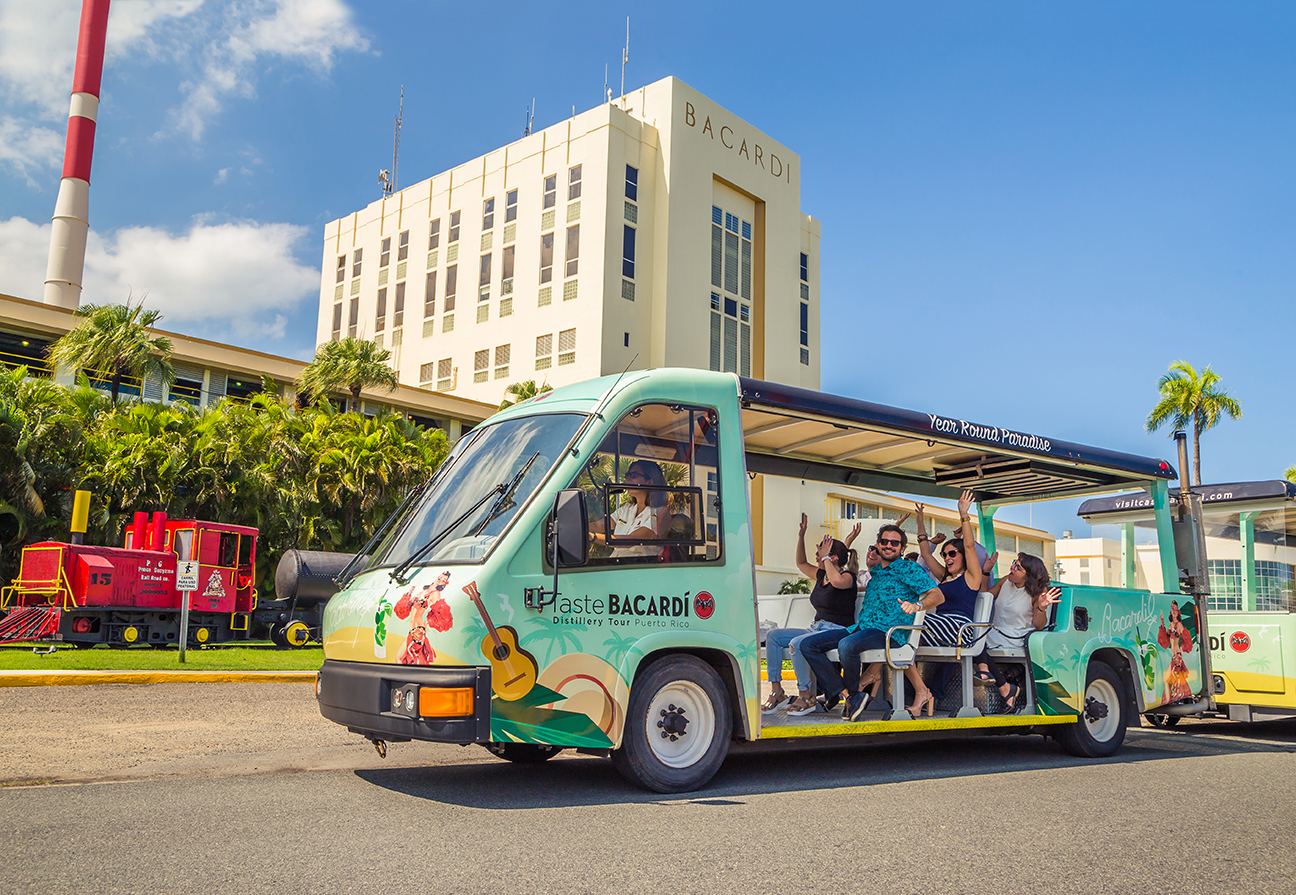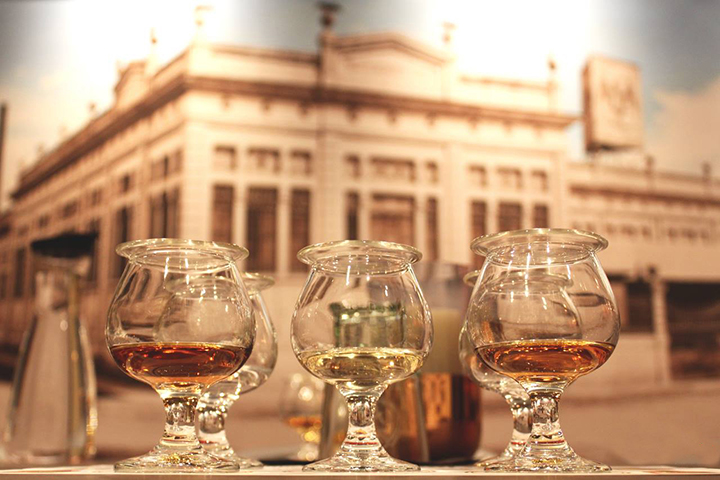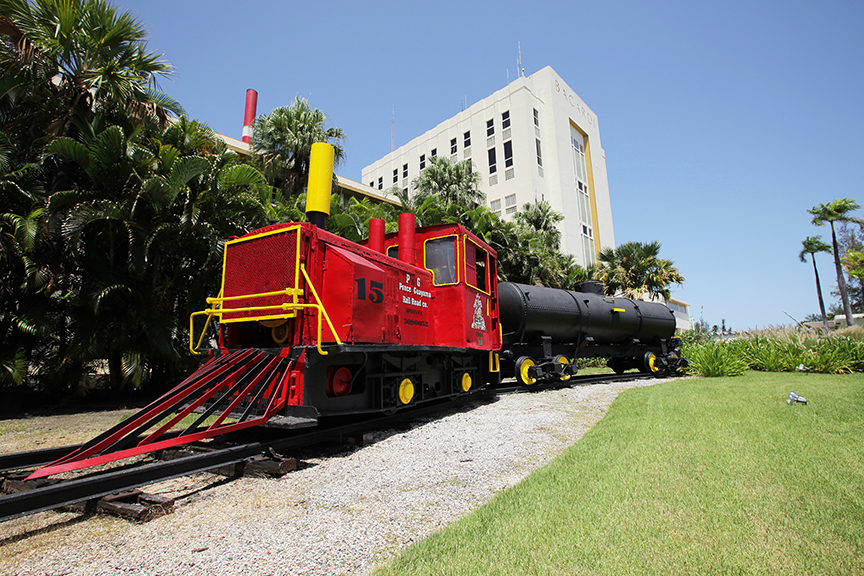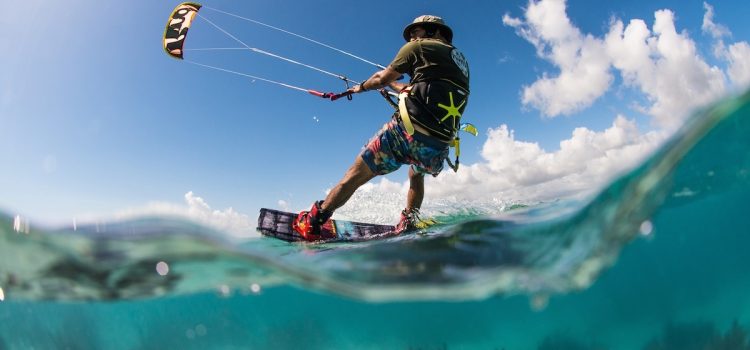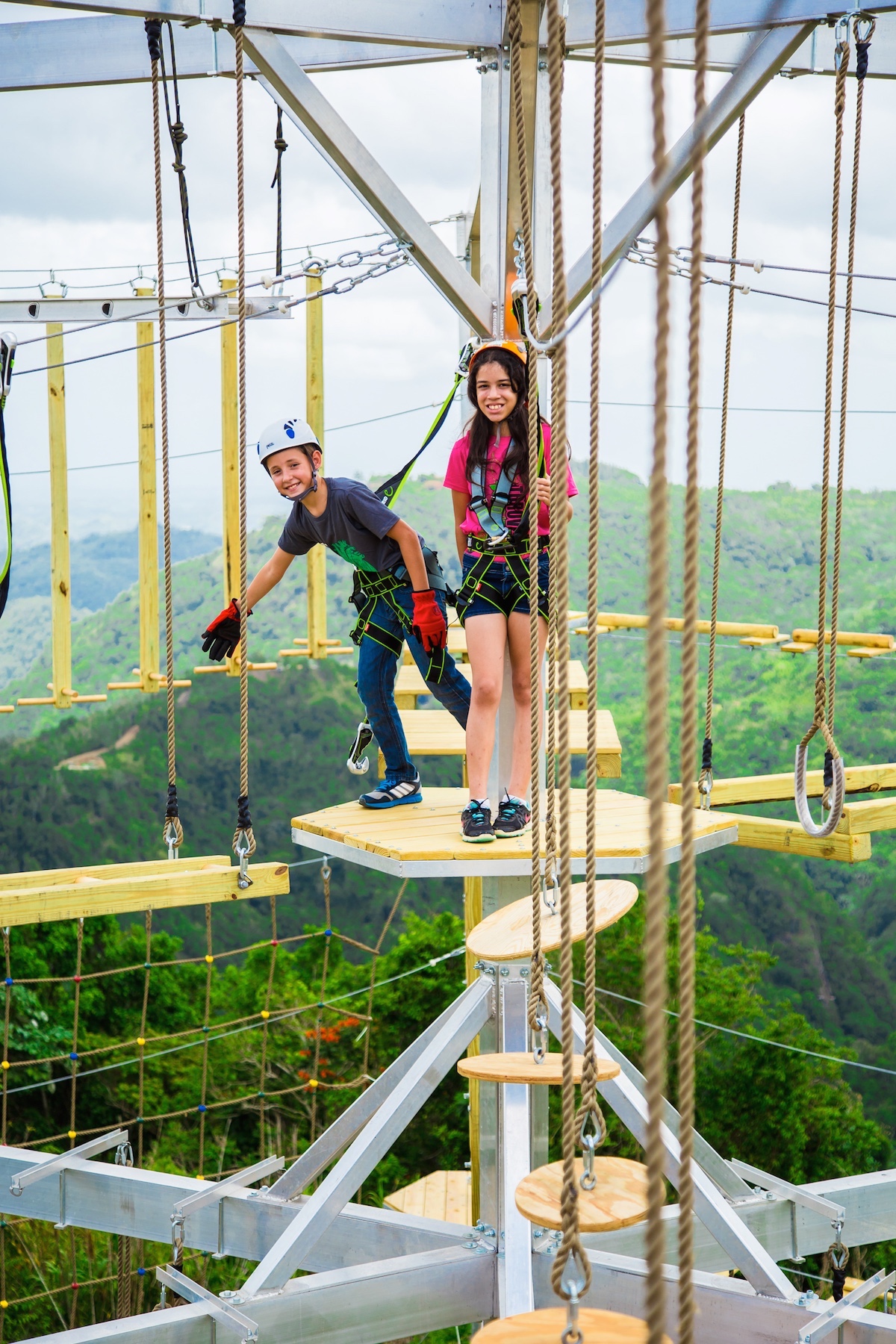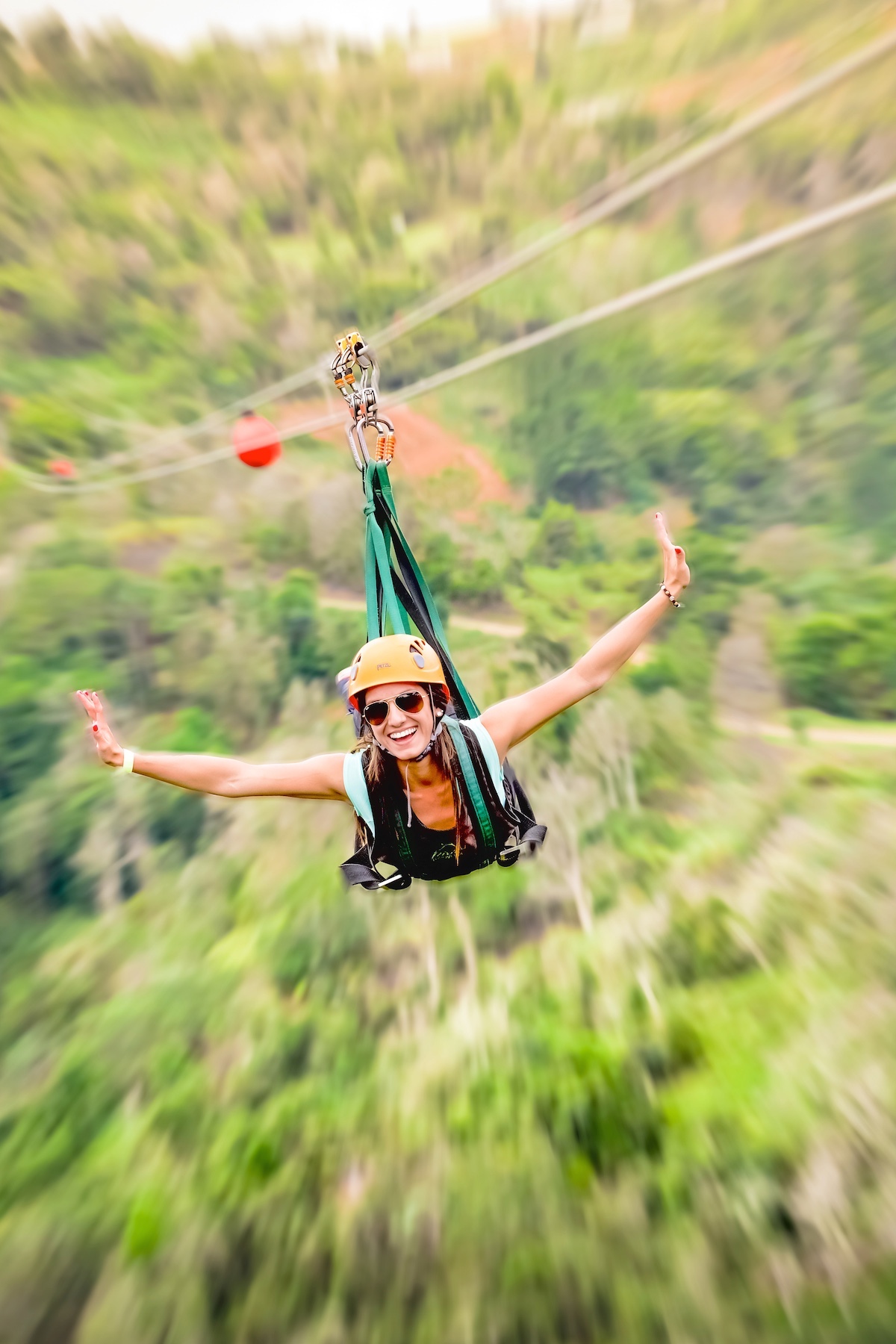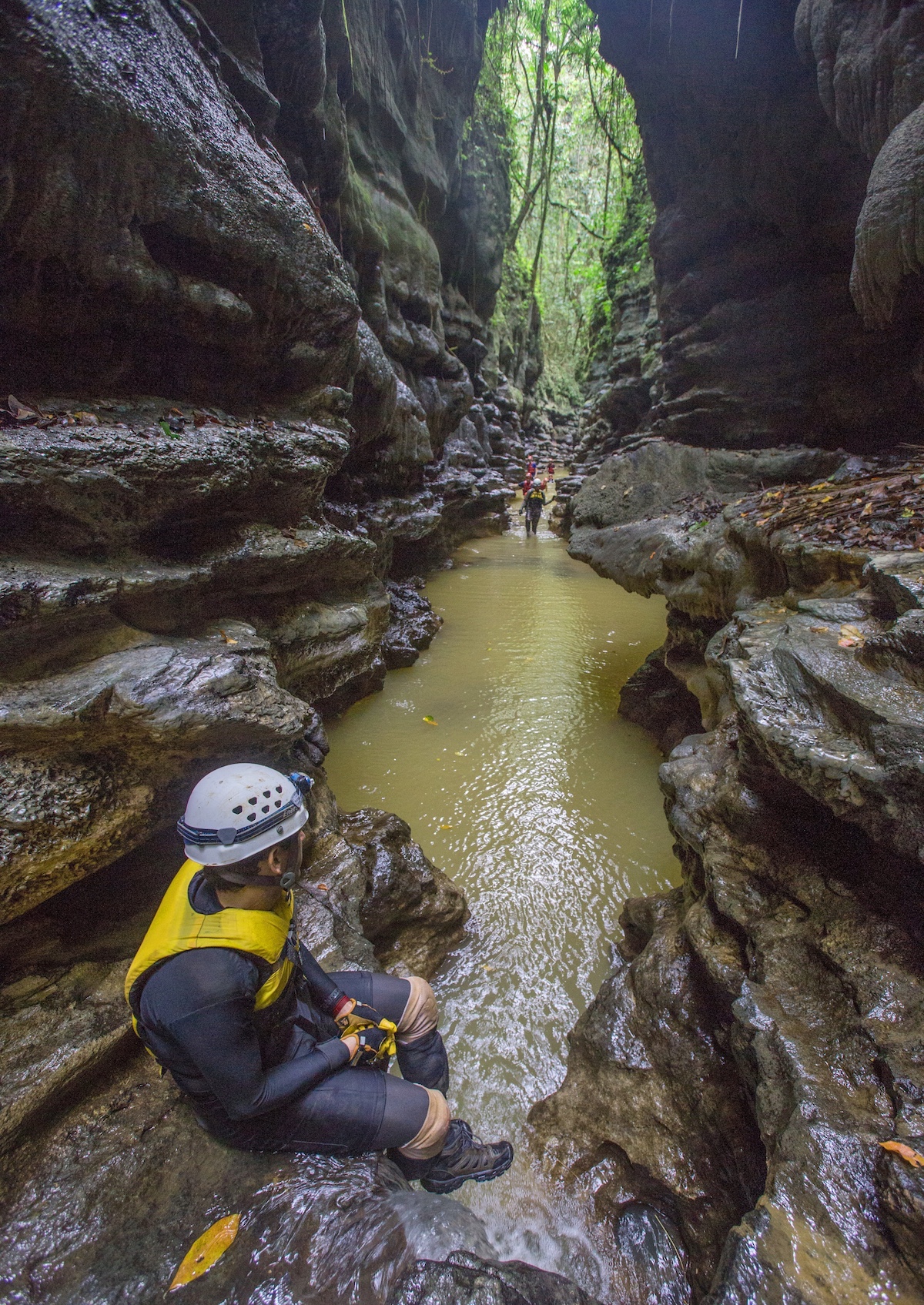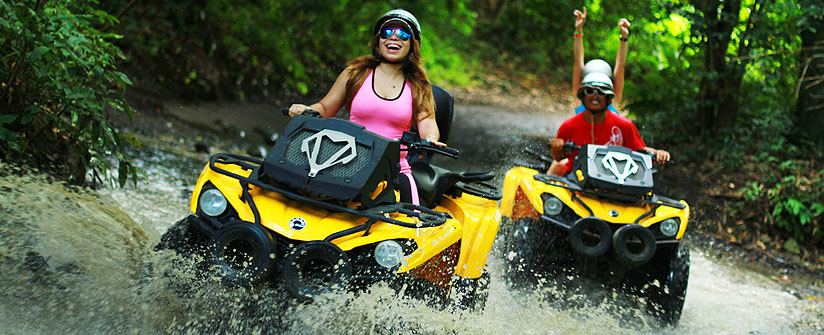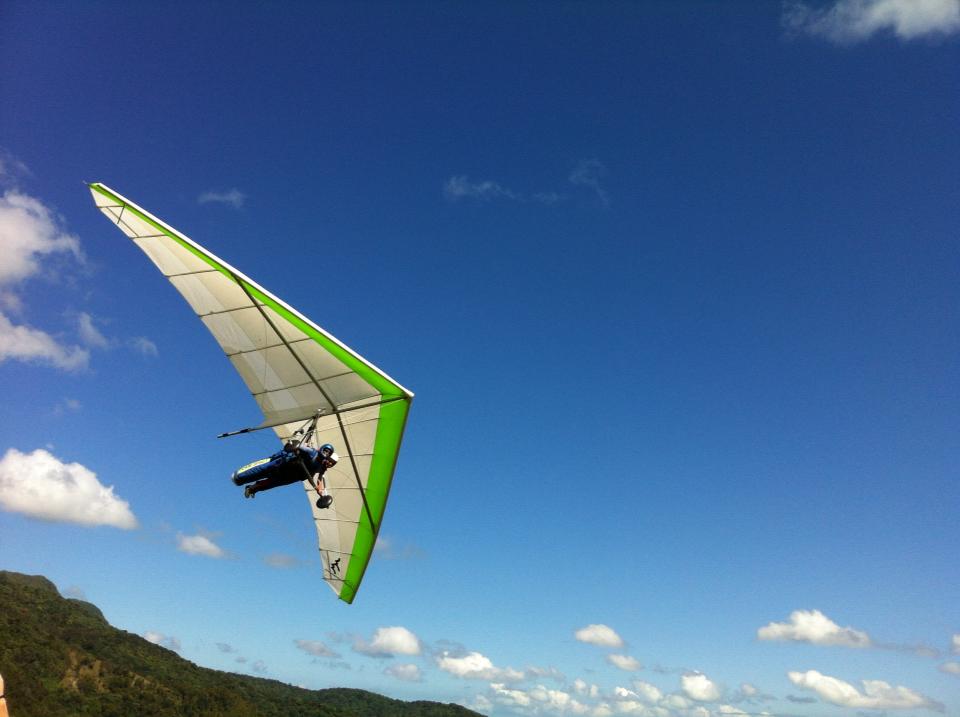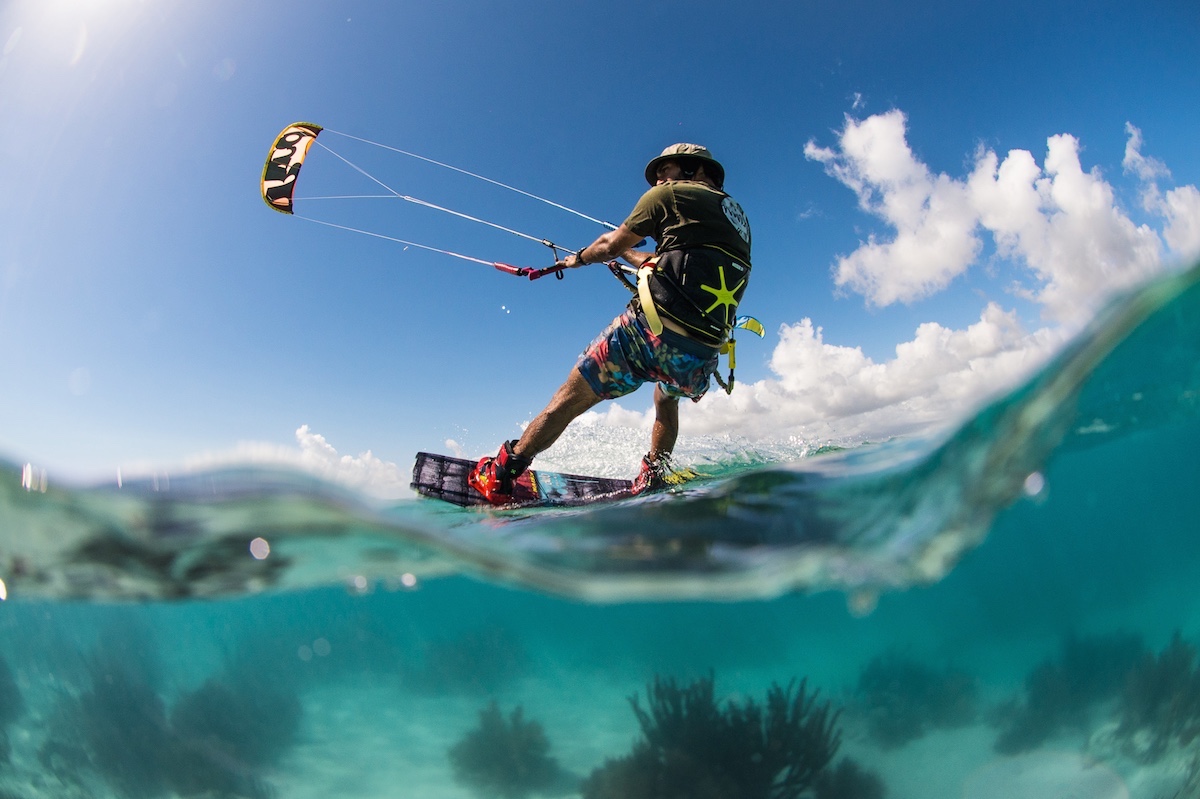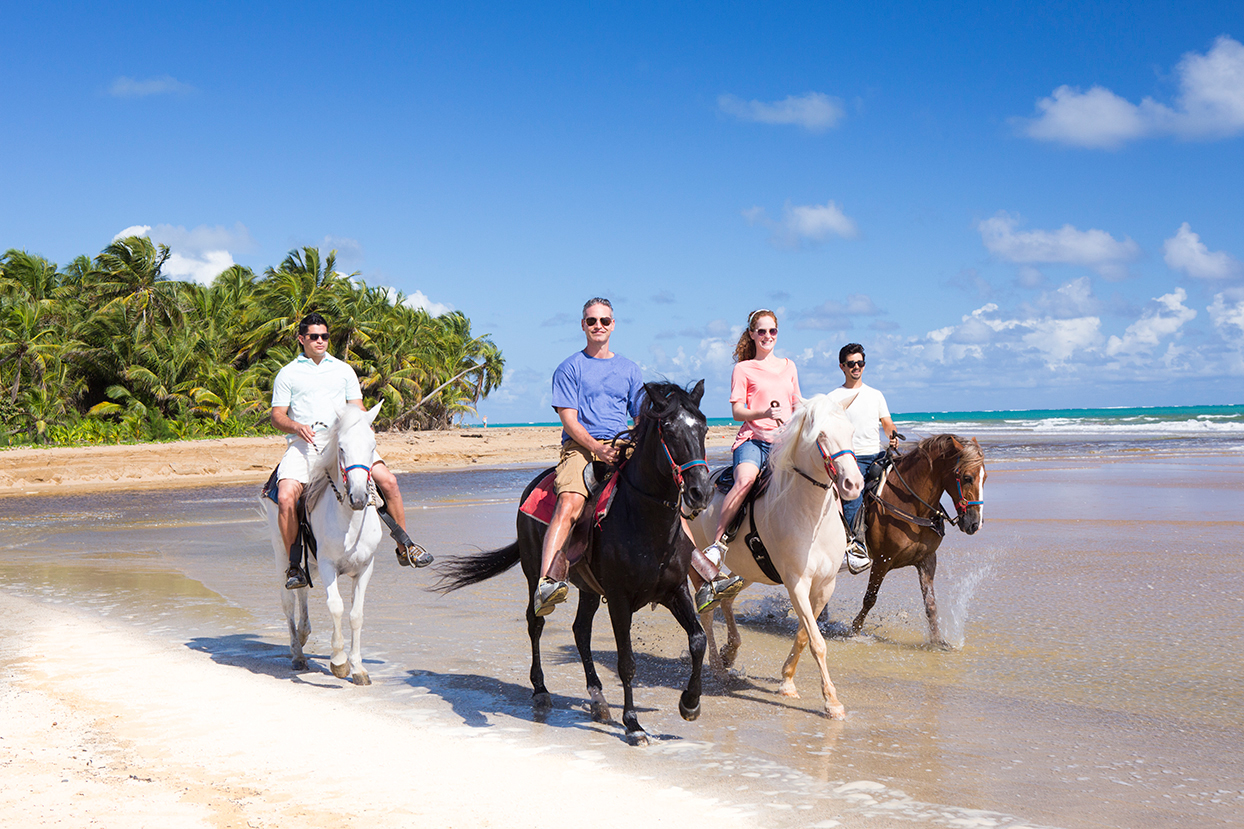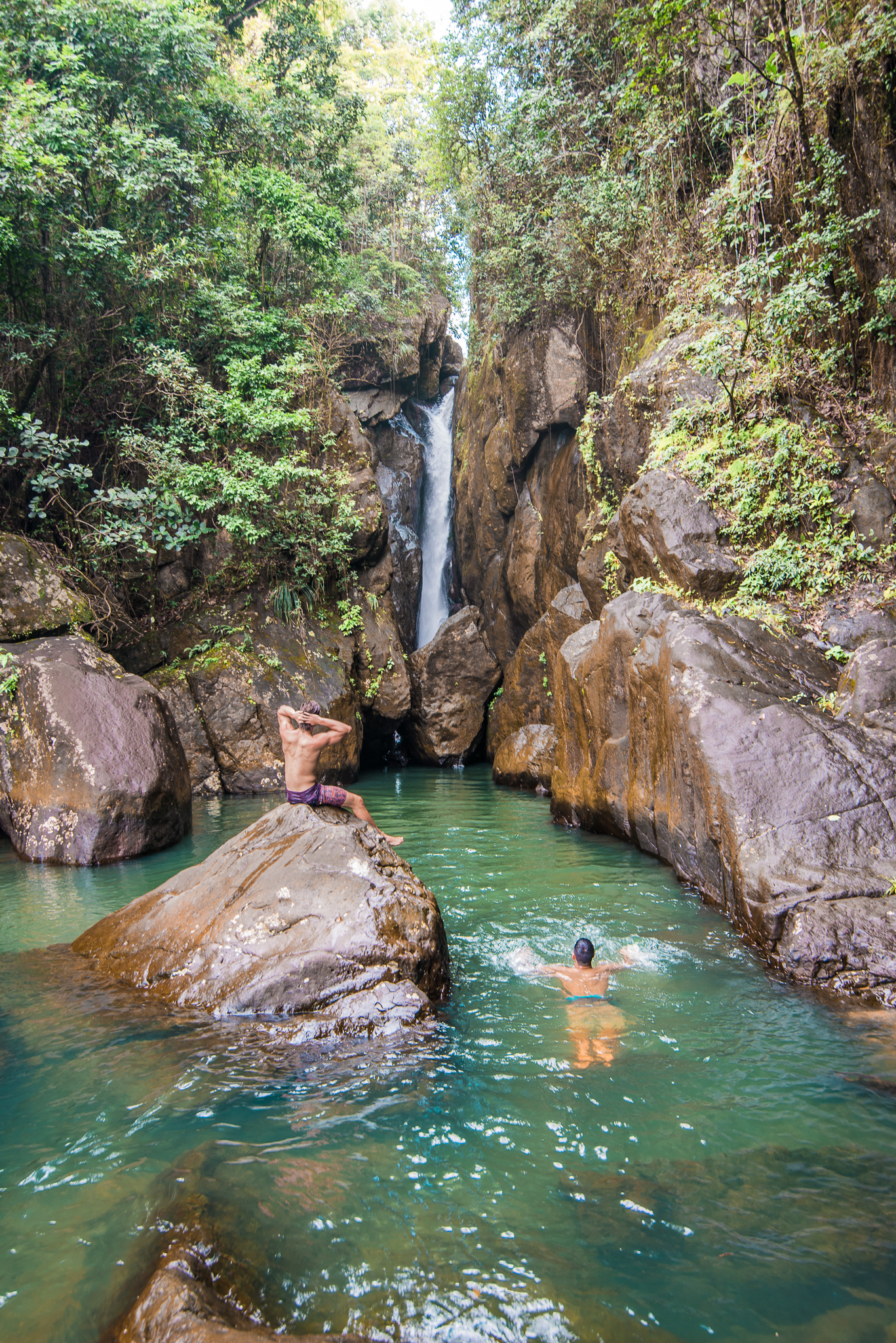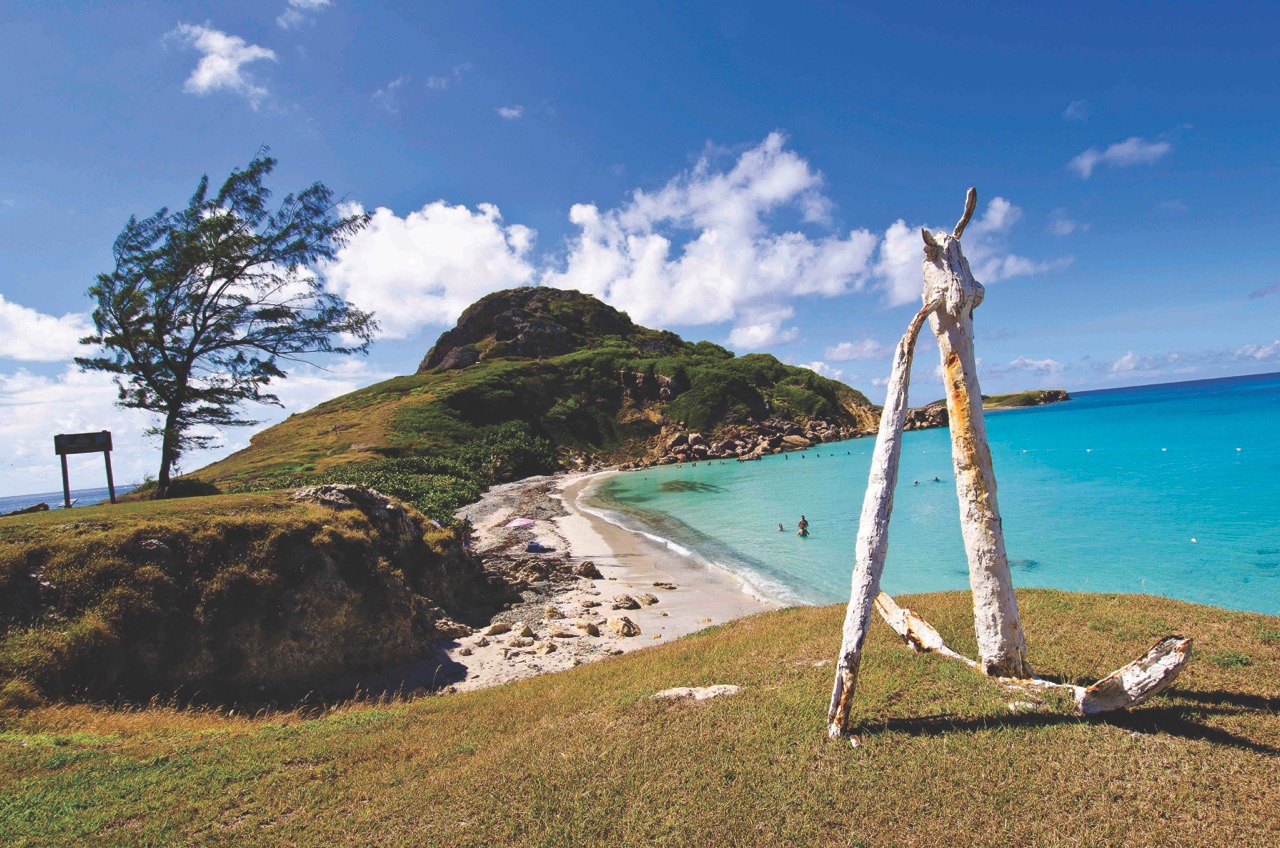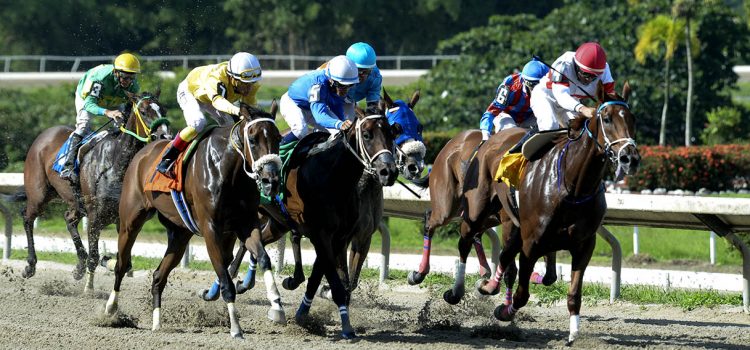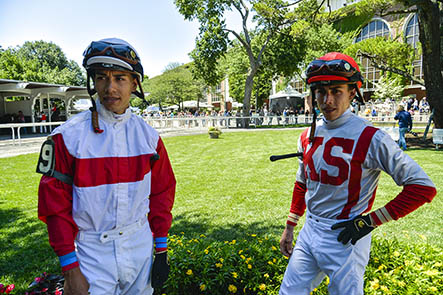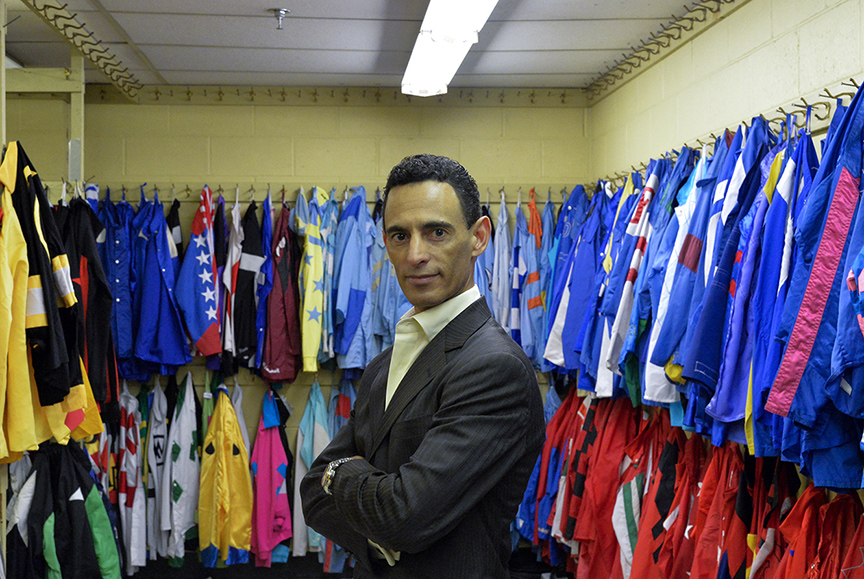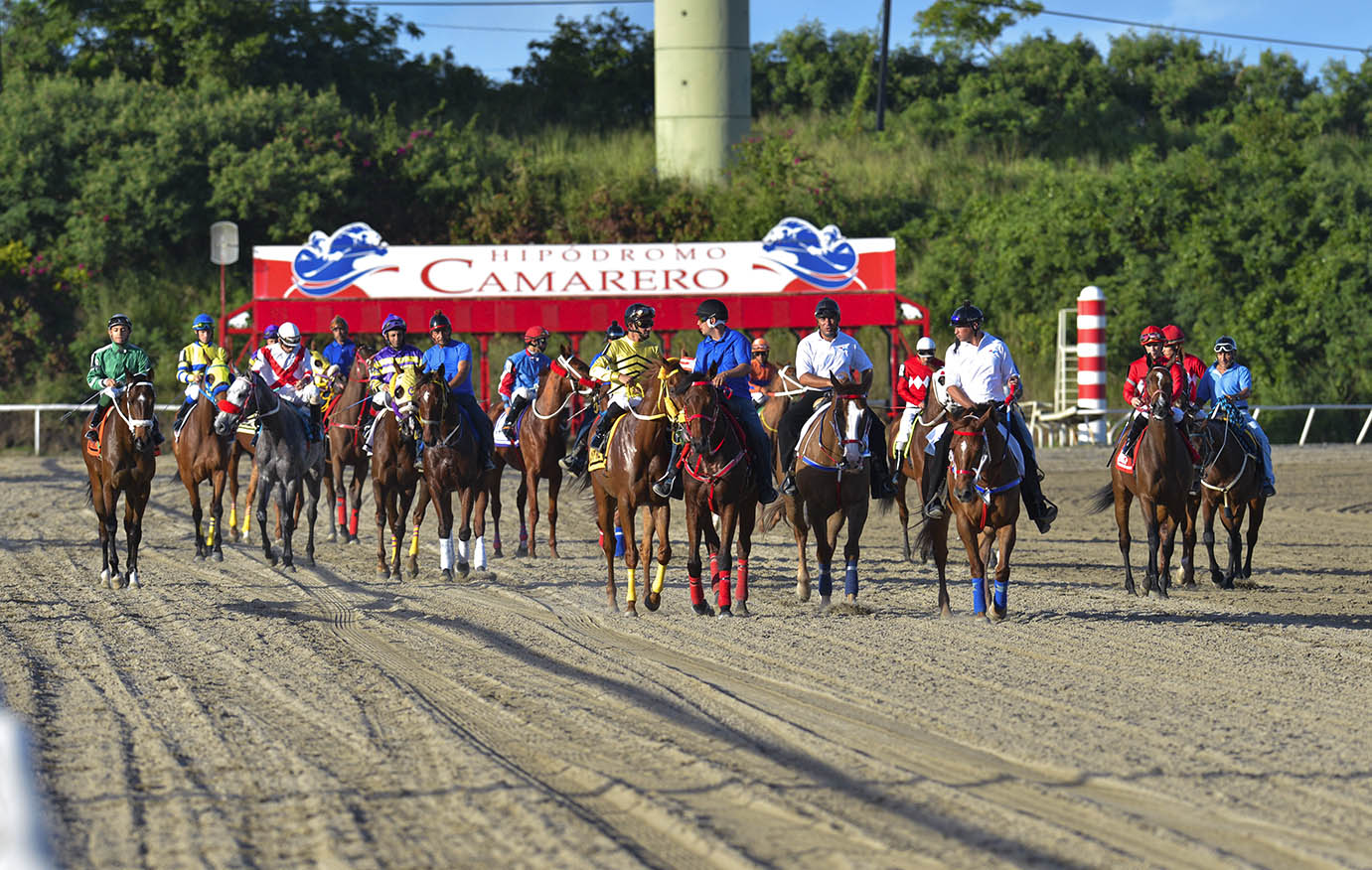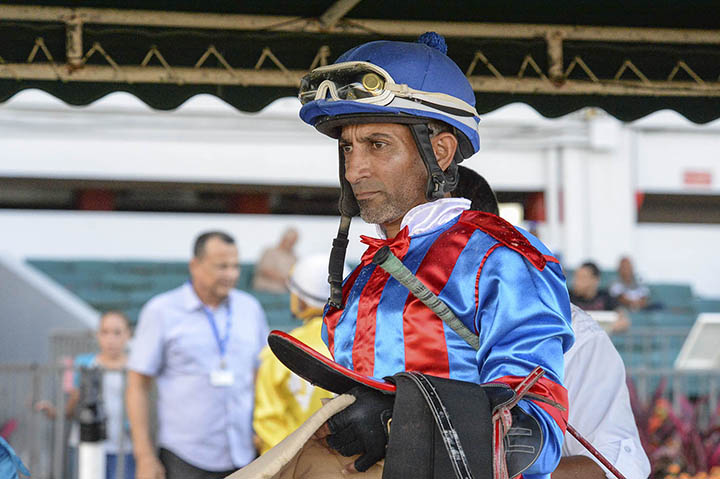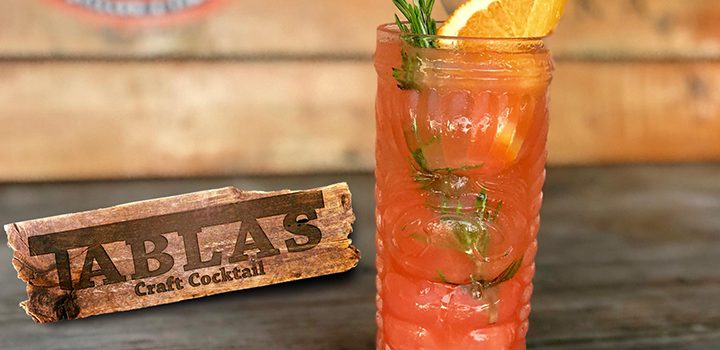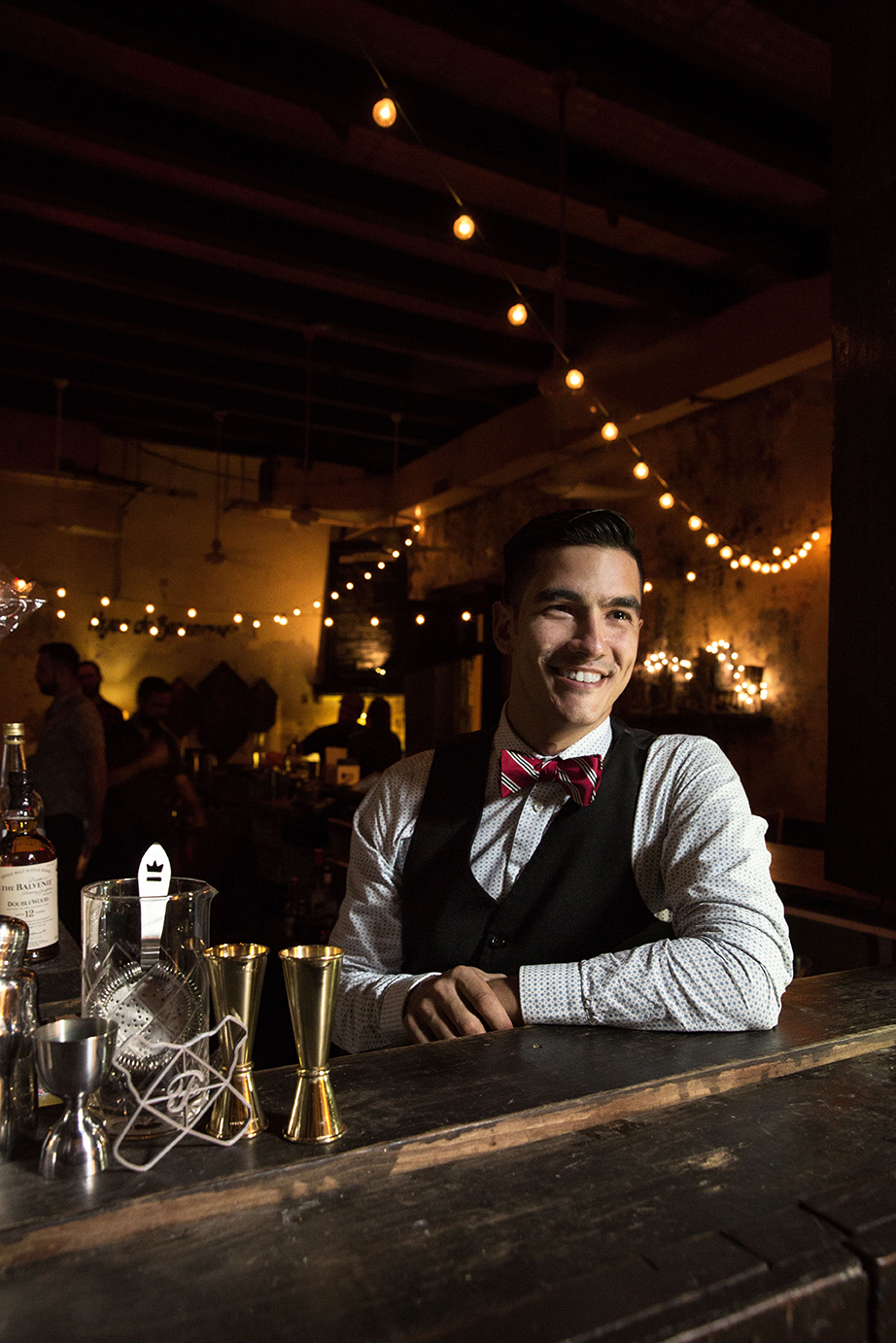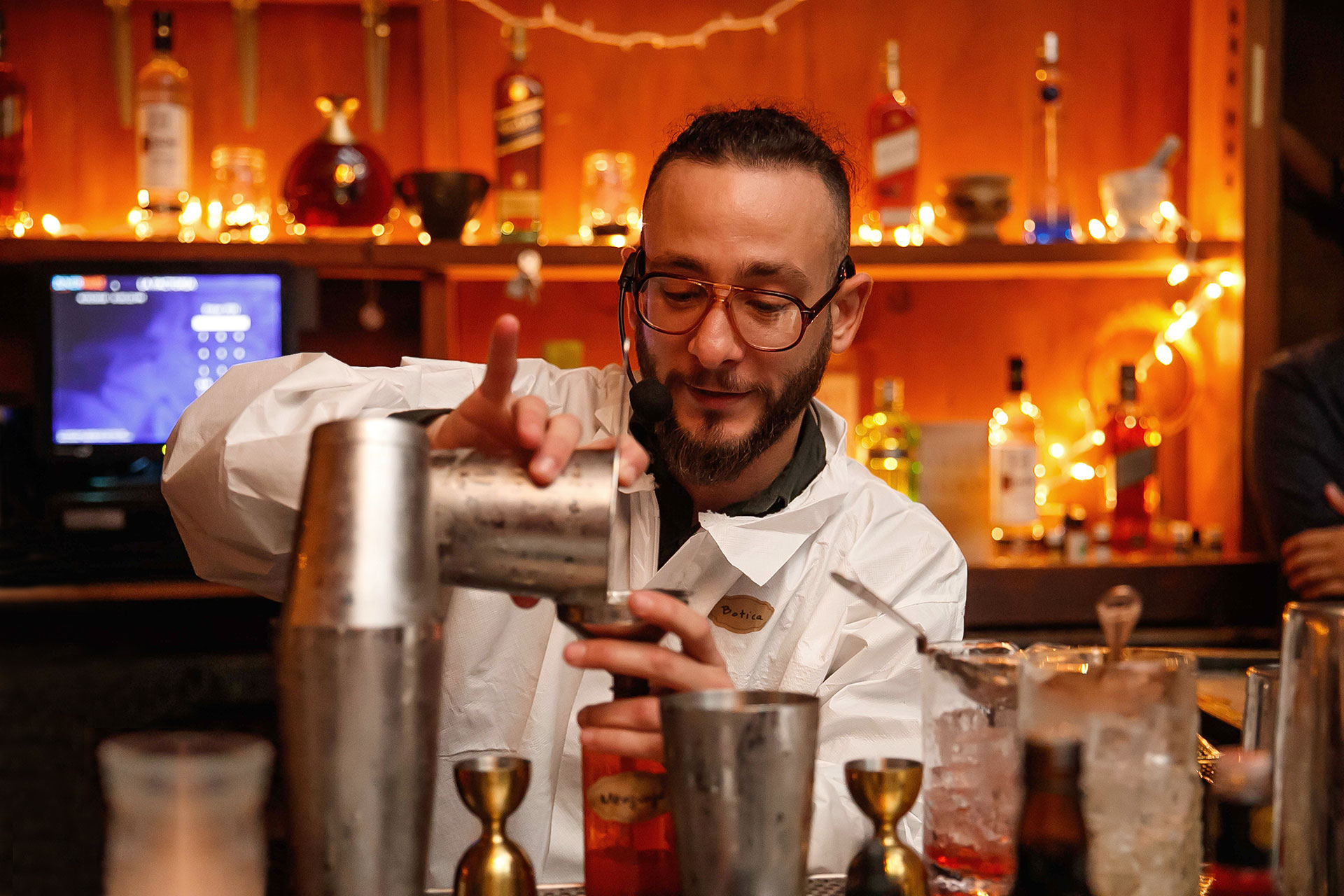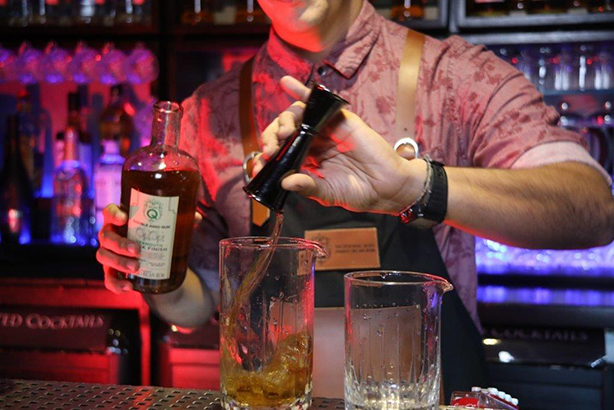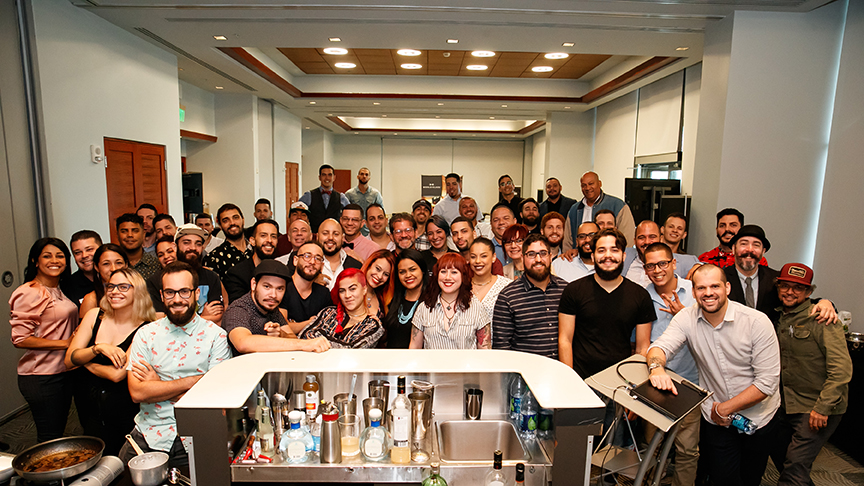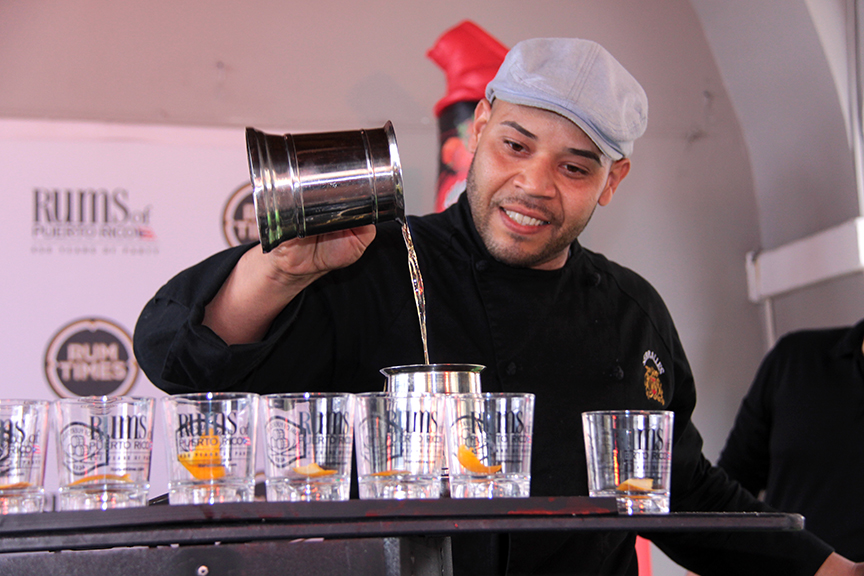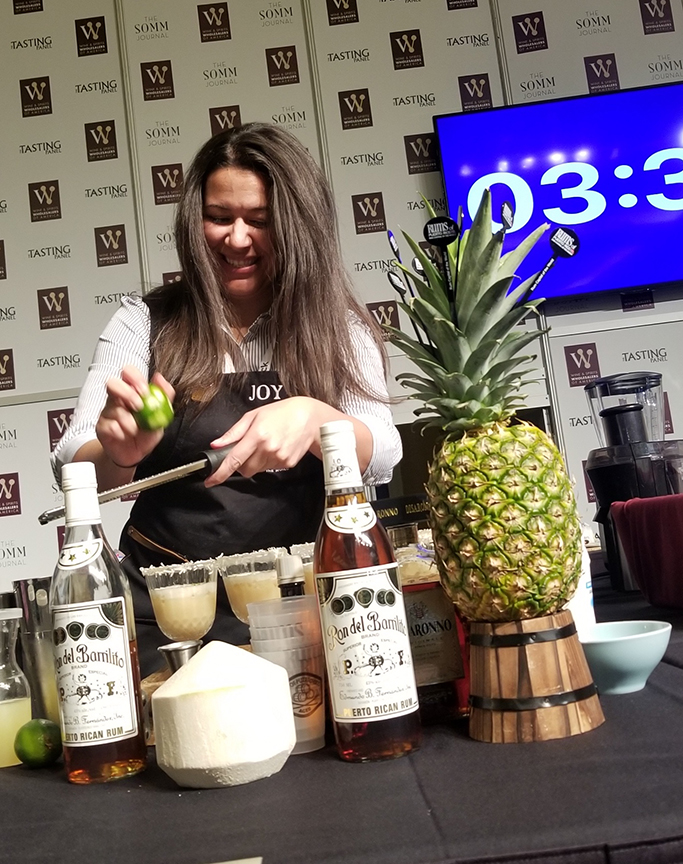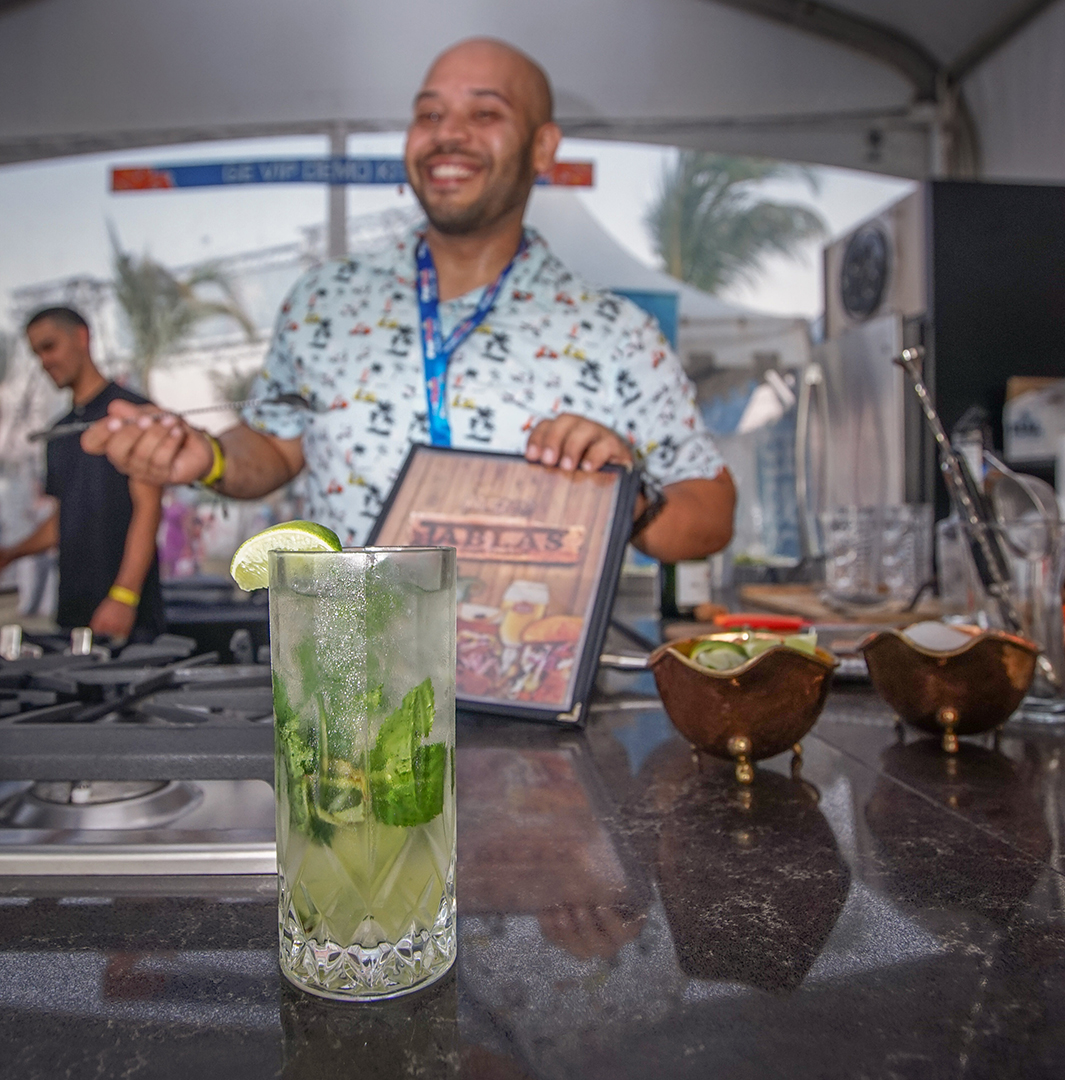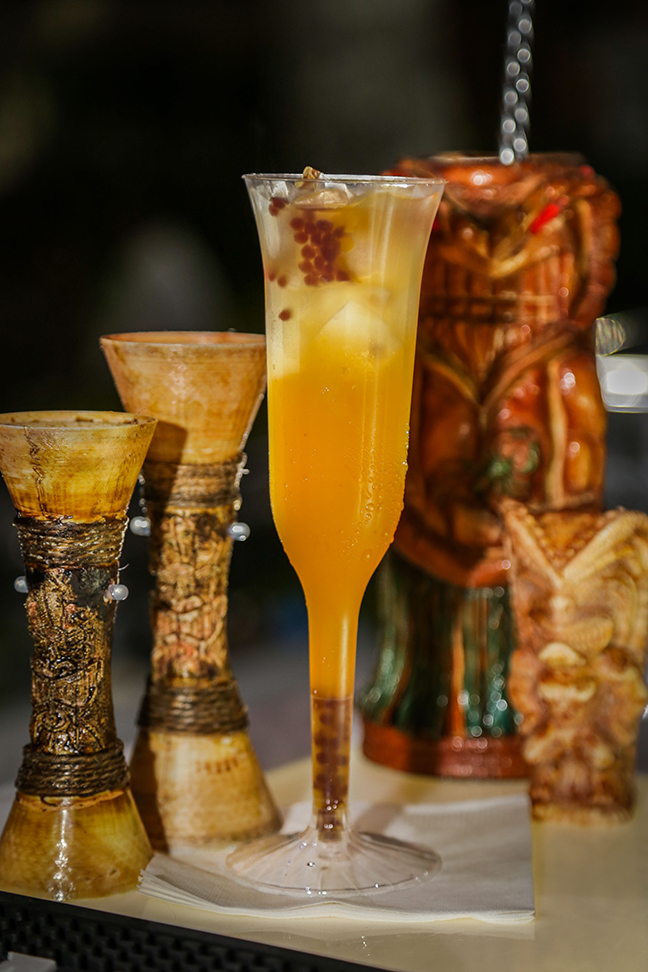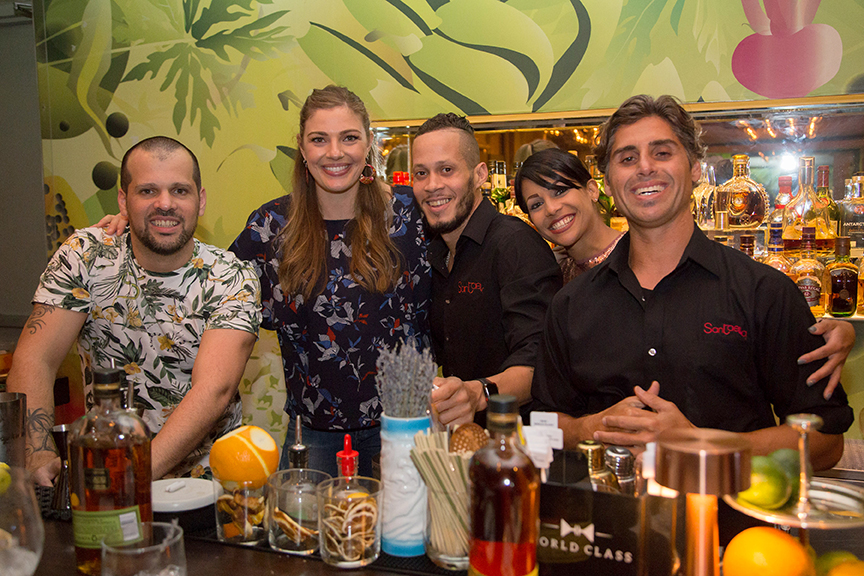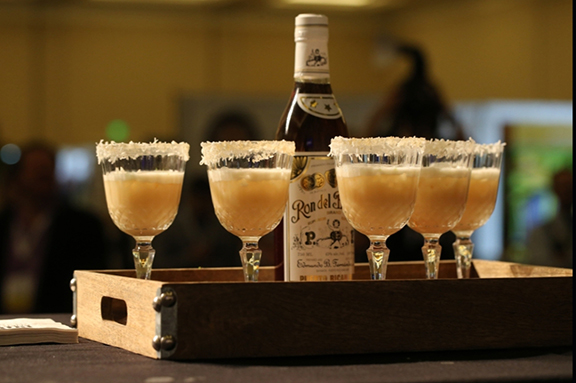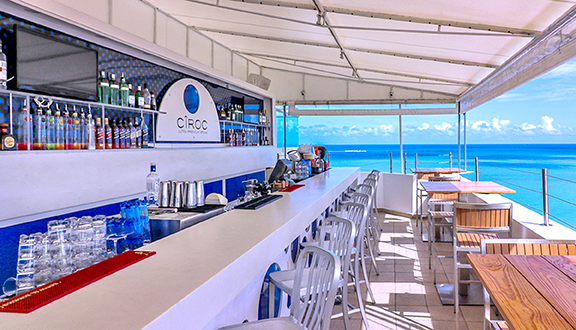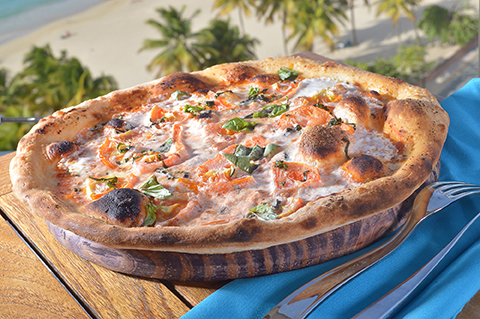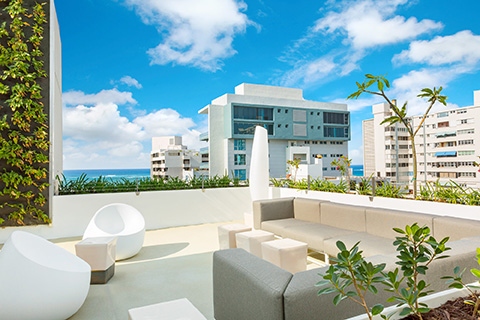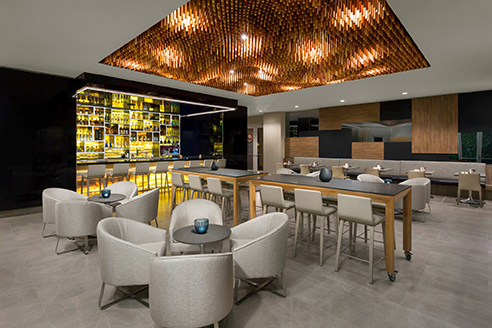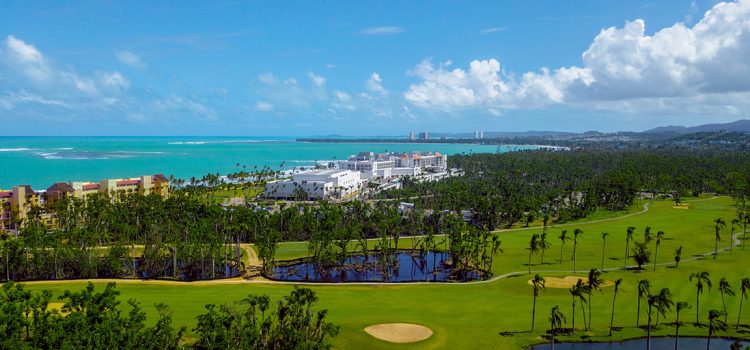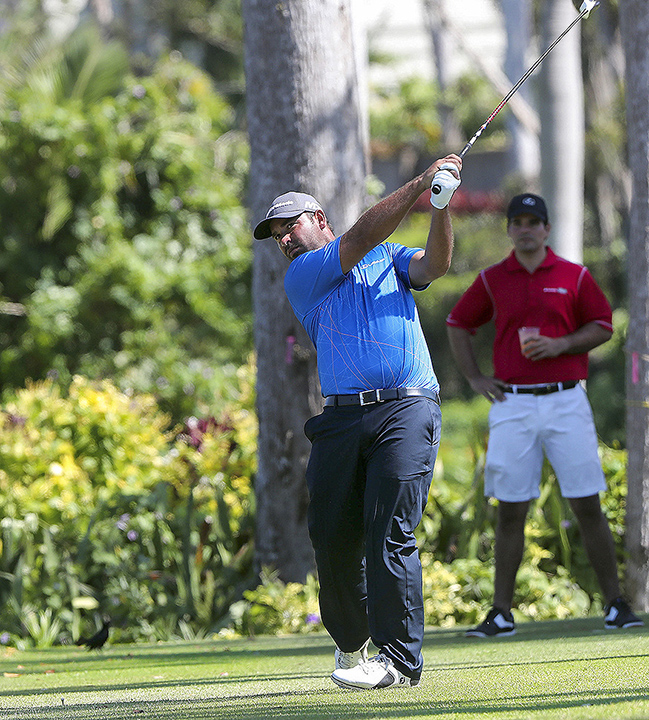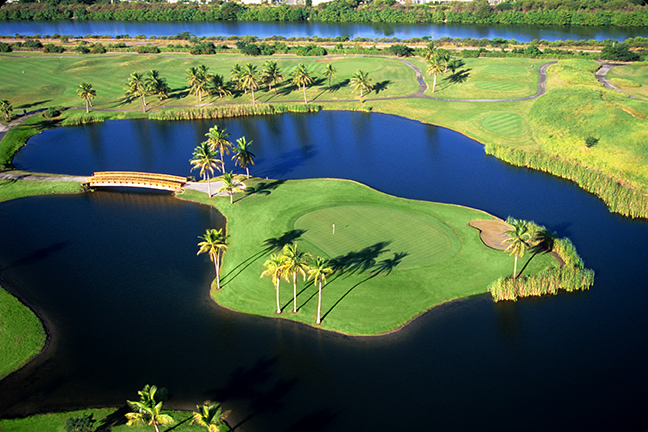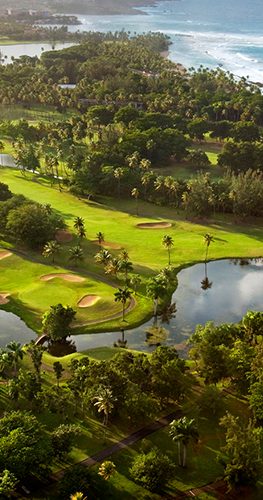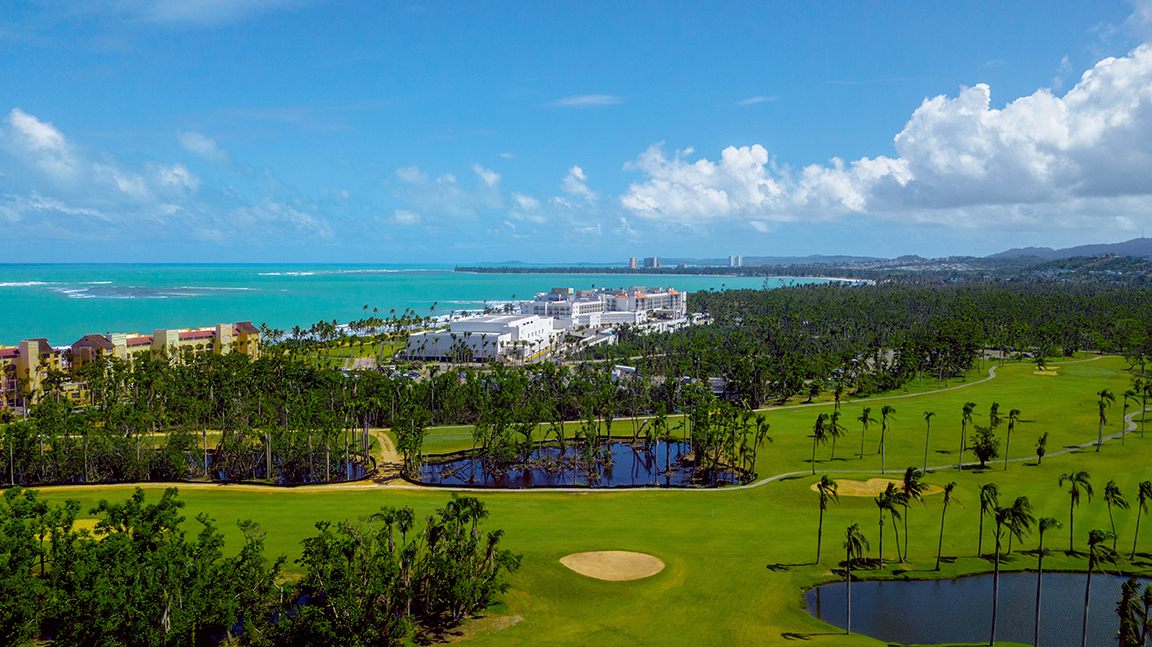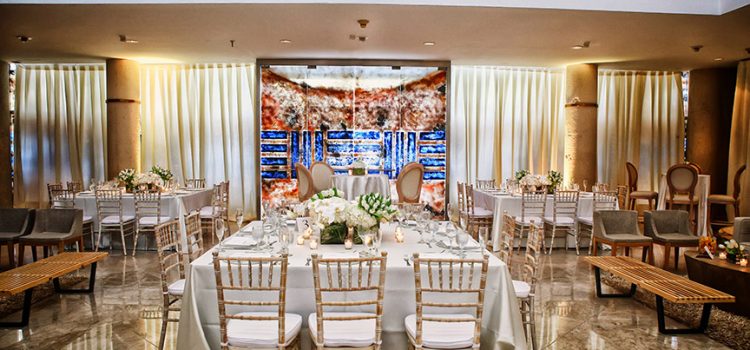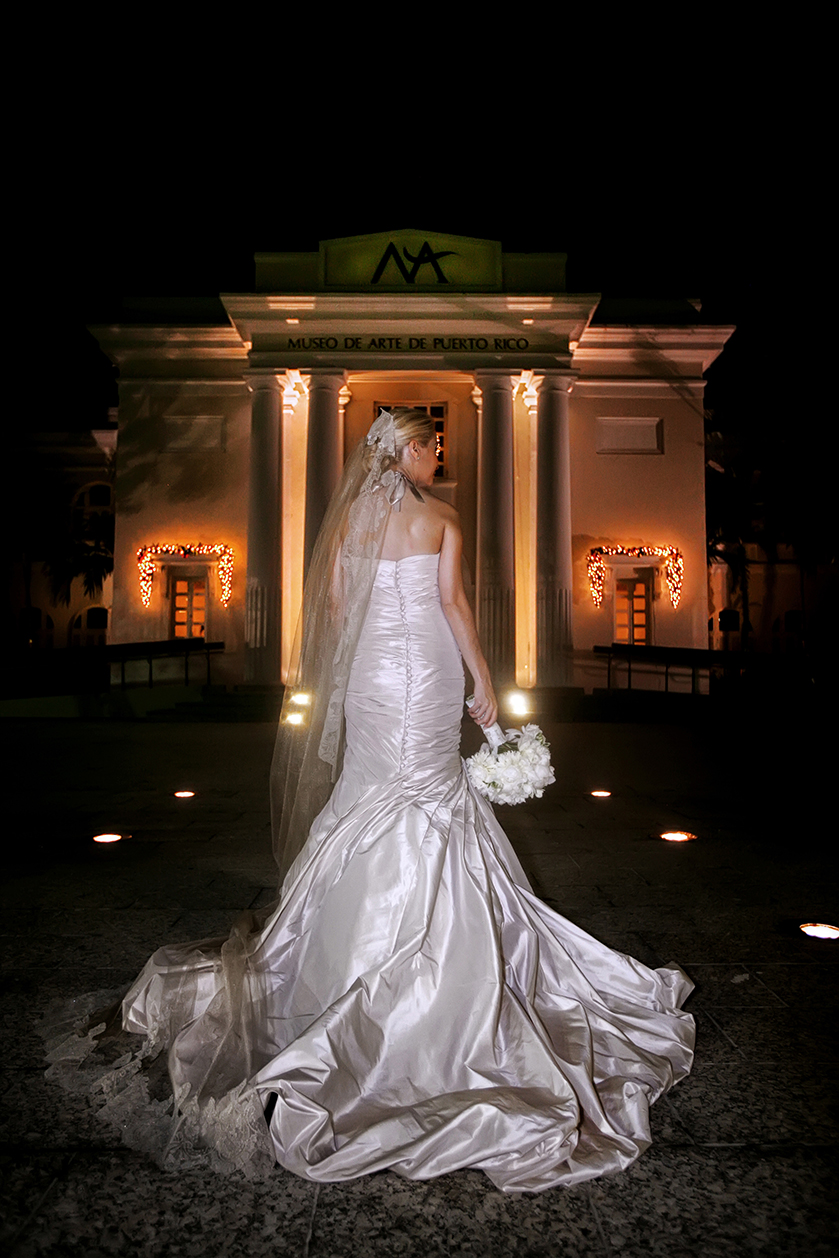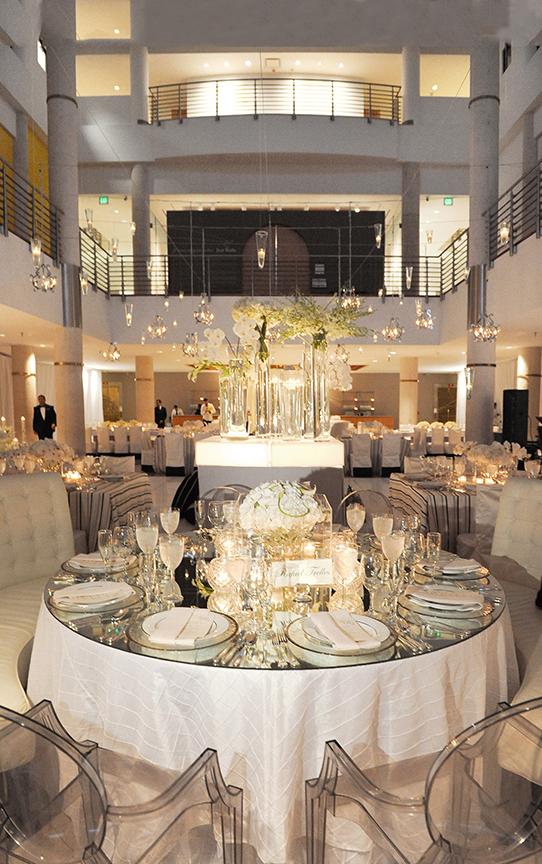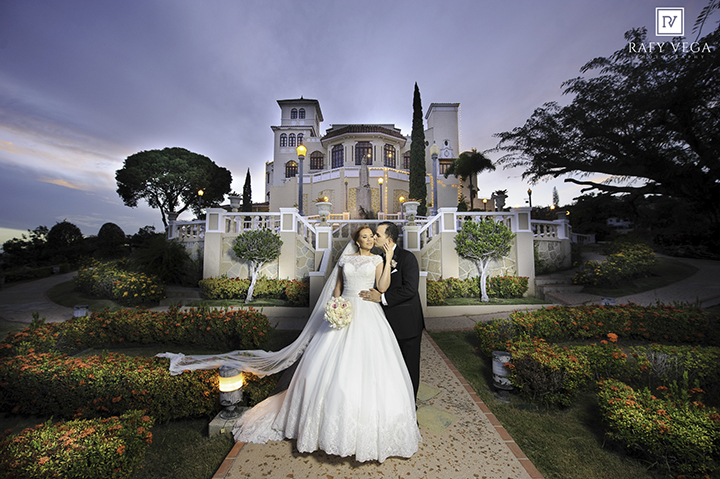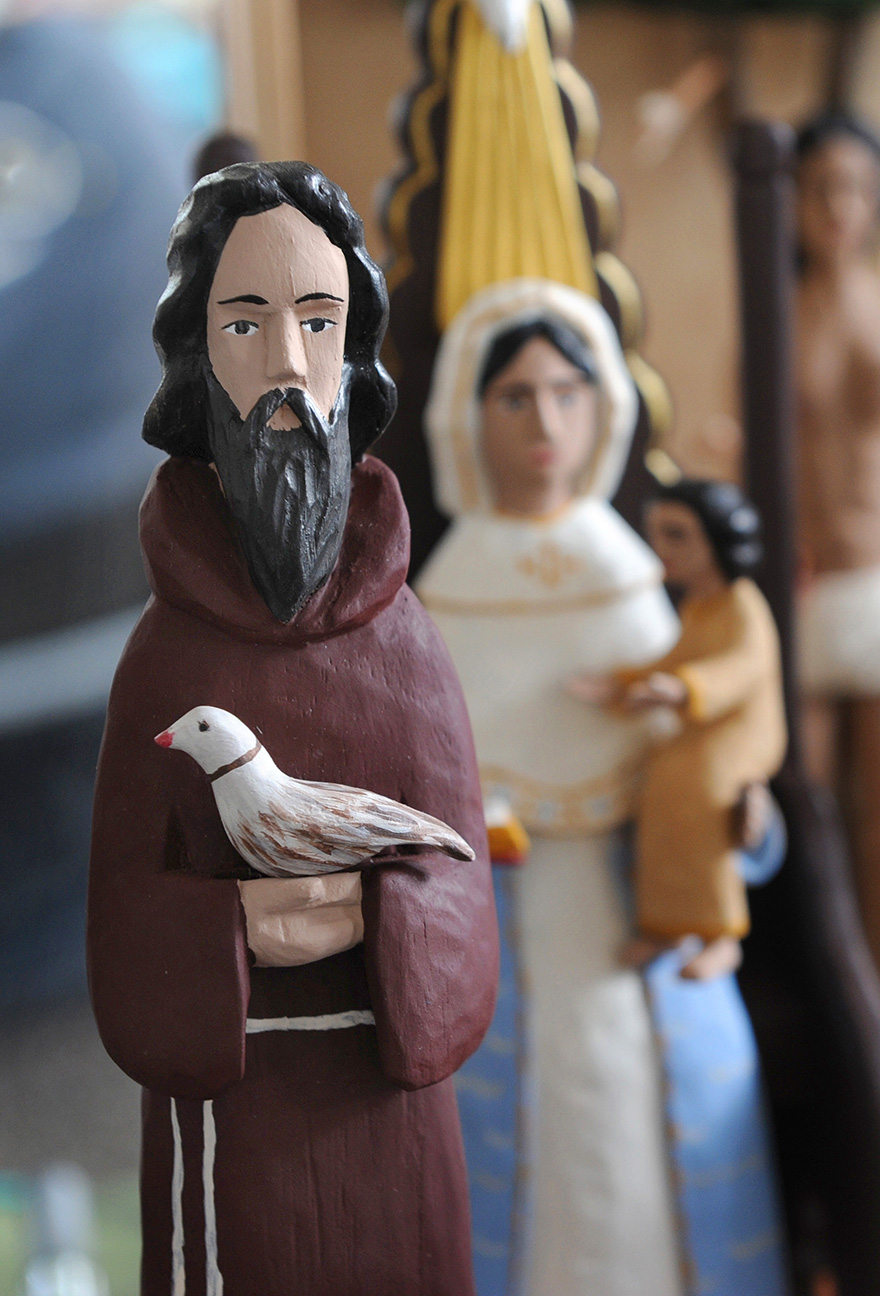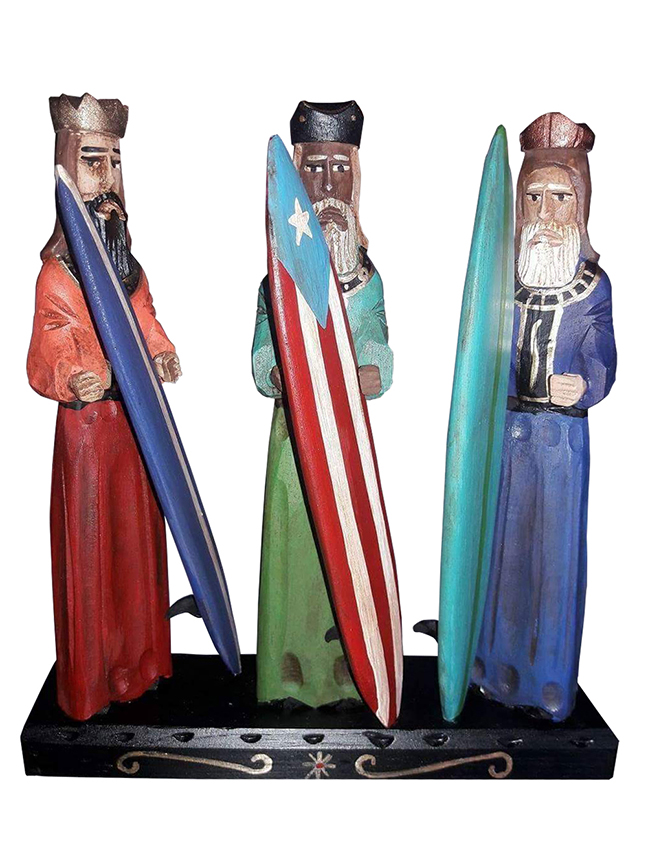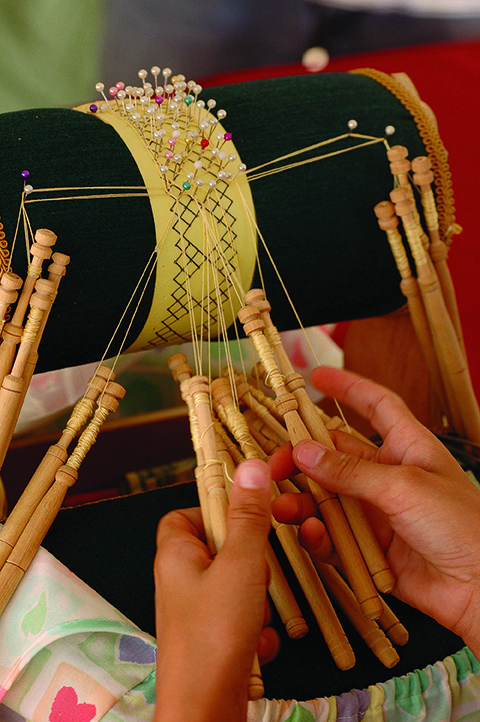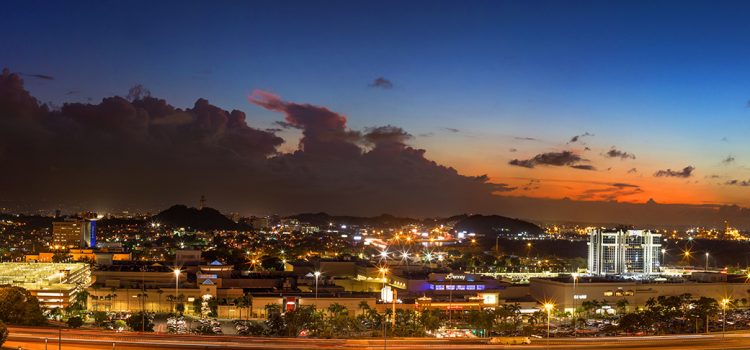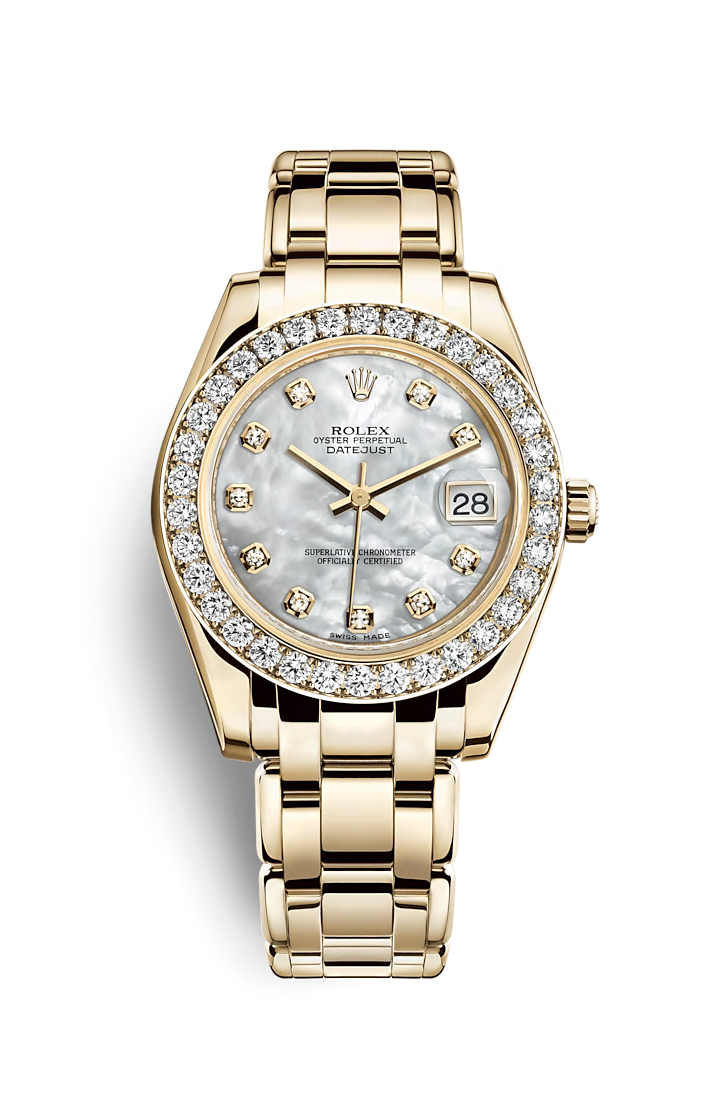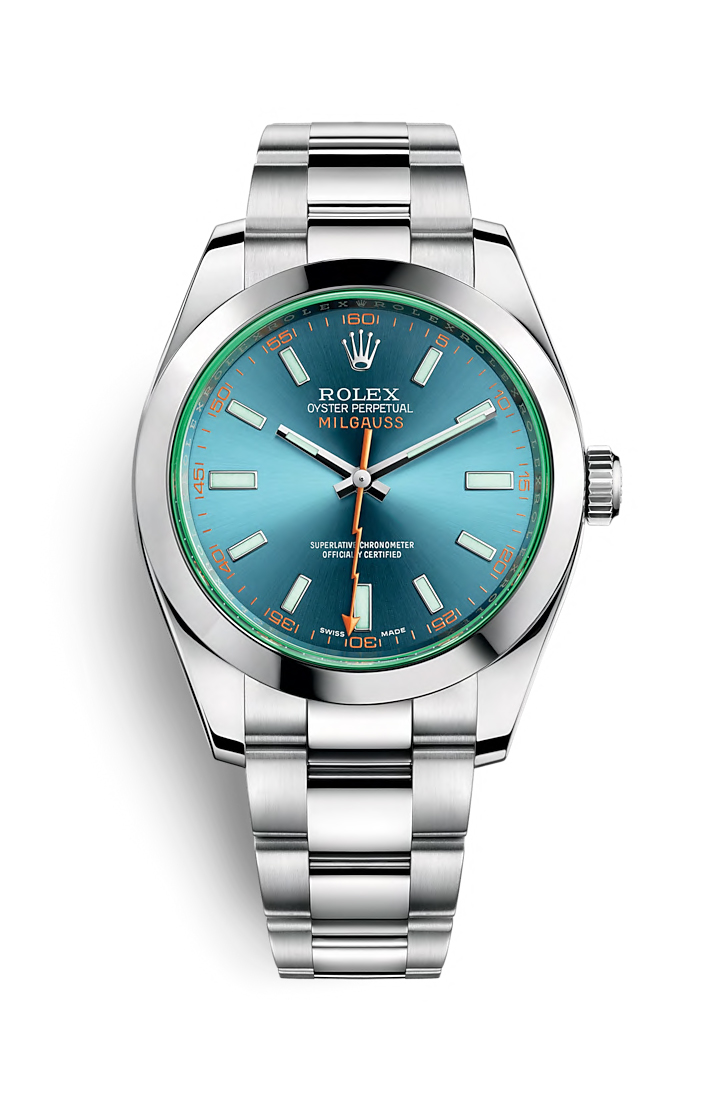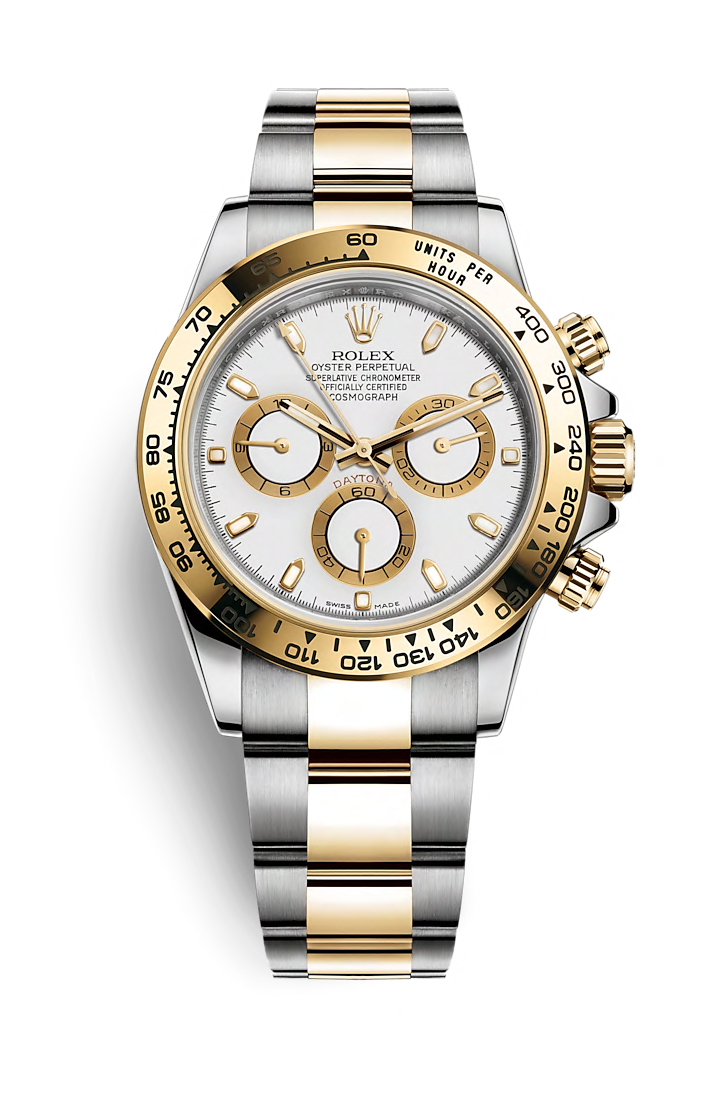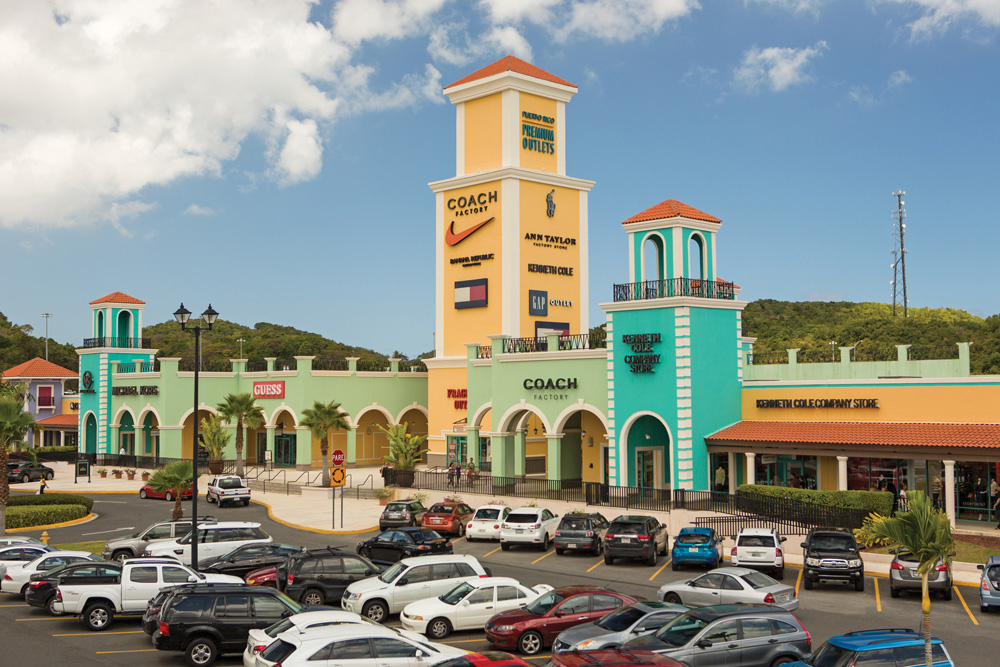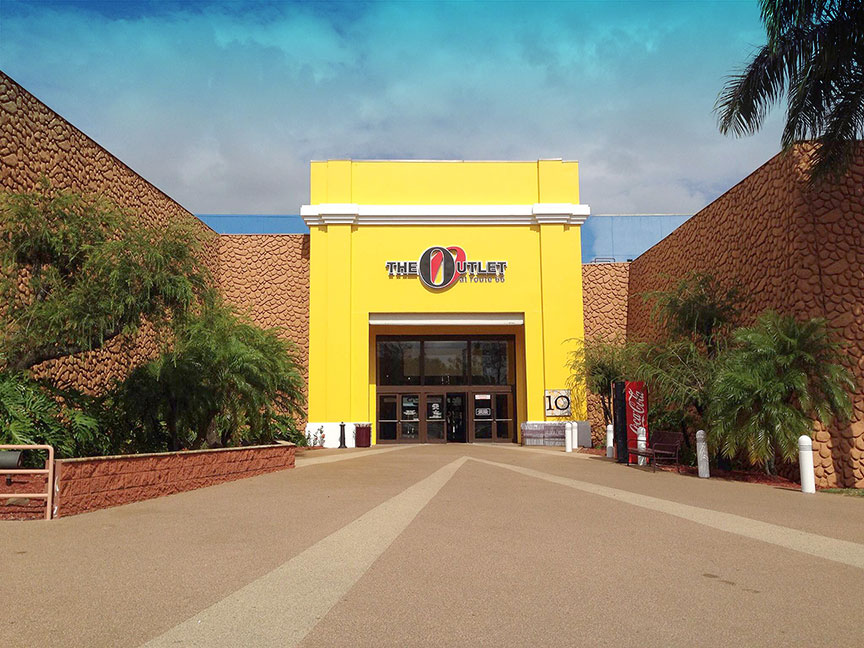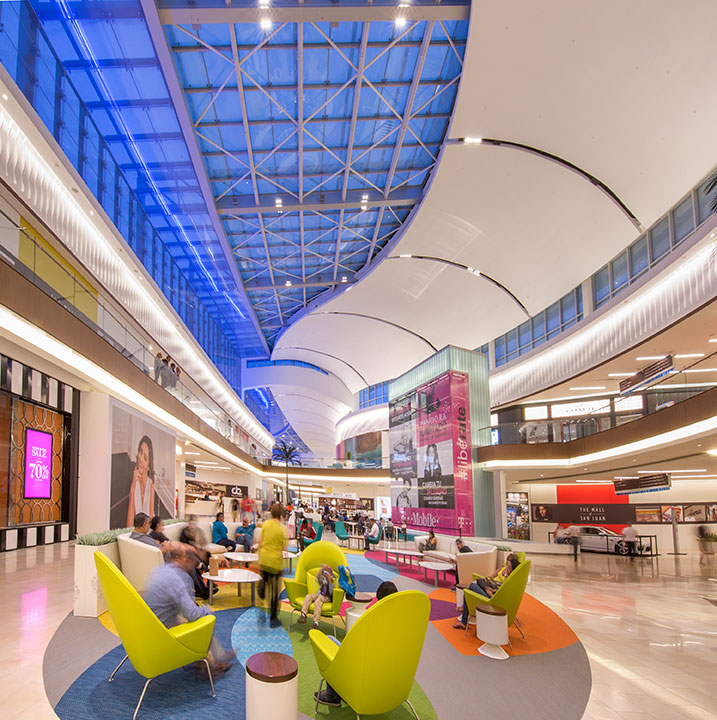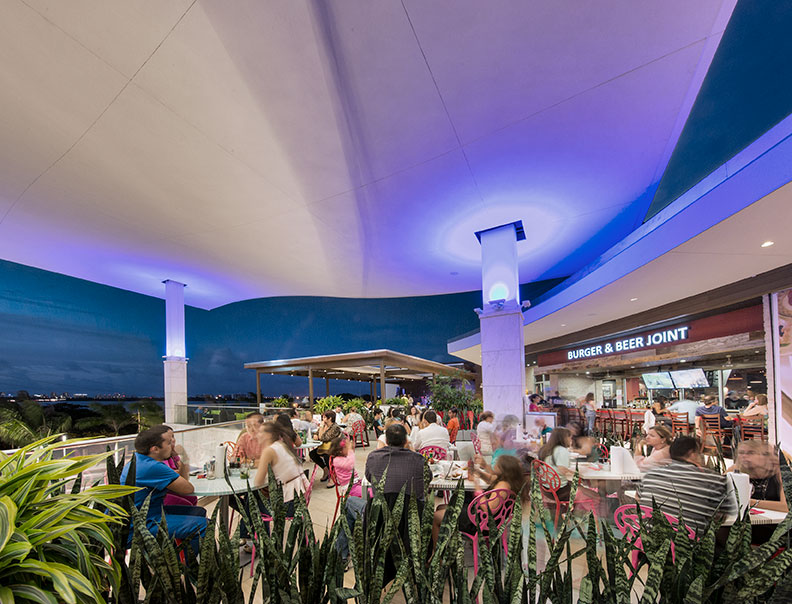Casa Bacardi A trip through history and innovation
Puerto Rico is synonymous with rum. From the pirates who plied their trade in the surrounding seas over past centuries, through the once-mighty sugarcane industry and into the pulsing nightlife that marks the modern metropolis, the celebrated spirit runs through the island’s rich history and continues to hold sway to this day.
“We want you to have fun while learning about rum, soak up the beautiful view and to experience everything new we have to offer.”
Puerto Rico is synonymous with rum. From the pirates who plied their trade in the surrounding seas over past centuries, through the once-mighty sugarcane industry and into the pulsing nightlife that marks the modern metropolis, the celebrated spirit runs through the island’s rich history and continues to hold sway to this day.
None more so than Bacardi, the iconic brand and standard-bearer that has conquered the world from its outpost at the western edge of San Juan. Known as the King of Rums and the Rum of Kings, the treasures inside those iconic bat logo bottles found in fine establishments in the far corners of the world took flight at the company’s distillery in the seaside town of Cataño, an up-coming diamond in the rough that proudly proclaims itself home to the globe’s best-selling premium spirit.
Rum is where Caribbean cool meets tropical heat. And while an air of mystery and adventure has always surrounded the spirit, Casa BACARDI pulls the curtain back a bit on the Caribbean’s famed libation and throws open its doors to visitors for a range of tours. Tickets can be purchased online months in advance or on site.
Reaching Casa BACARDI’s 127-acre campus is a breeze. Hop on the ferry in Old San Juan for a quick crossing of the deep water bay that is short on price but long on million-dollar views. Taxi cabs and Uber are also both sure bets and vacationers with rental cars will find the trip out is headache free – an exit here and a turn there and you’ve arrived.
Christened the Cathedral of Rum by former Gov. Luis Muñoz Marin in the middle years of the last century, the sprawling bayside property is the largest premium rum production facility in the world.
Head through the gates and along the palm-lined and pond-fringed drive to the bat-winged visitors Bat Bar Pavilion, a soaring open-air creation of Spanish architect Felix Candela that was built in 1962. With a steady schedule of tours on tap, you won’t have to wait long to get started – although what’s the rush to leave the waterfront bar that serves up a fresh supply of renowned Bacardi-based cocktails including the iconic Cuba Libre, must-have Mojitos, potent rum punch and delicious Daiquiris. Kick back and take in the sights, which include epic views of the Spanish-colonial ramparts of El Morro.
All Casa Bacardi options are fully bilingual, educational and experiential, mixology and rum tasting particularly set for adults-only.
The Historical Tour can be fun for all ages. It starts with a complimentary cocktail for adults before climbing on board an open-air trolley for a guided tour that uncovers the family-owned company’s history of craft and innovation. Out of the trolley and into the air-conditioned Visitor Center is both a step back in time and a glimpse into a cutting-edge future that stays true to the vision of quality established by Don Facundo Bacardi, a Spanish-émigré who after years of experimenting with distilling rum in his adopted hometown of Santiago, Cuba started his first distillery there – producing his signature light and elegant spirit — at the same time the Civil War was raging in the United States.
While rich in history, Bacardi has never been satisfied with resting on its laurels. A clear case in point is the ongoing evolution of its Casa Bacardi, which since its opening in 1961 has continued to tantalize visitors a true rum paradise. The addition of the highly rated mixology and in-depth rum tasting tours are proof positive of Bacardi’s unquenchable thirst to outperform expectations at every turn.
“Casa Bacardi needs to be on your Puerto Rico bucket list. We want you to have fun while learning about rum, soak up the beautiful view and to experience everything new we have to offer. Be our guest and come have a Mojito where rum was created,” said Wesley Cullen, Casa Bacardi’s general manager.
While staying true to Don Facundo’s standards and its Cuban roots, political upheaval and the promise of progress prompted the family to pull up stakes and head to Puerto Rico, the sister island that was, and remains, Bacardi’s springboard to the world.
Visitors can put together the pieces of the rich Bacardi legacy through museum pieces that include century-old copper distilling posts, bills of sale and the very furniture on which the course of the company was charted into its seventh-generation. Follow the evolution of Bacardi’s bottles and branding – all with the bat logo that was adopted early on at the suggestion of Don Facundo’s wife Amalia Moreau as a tribute to the fruit bats, symbols of good fortune that nested in the tin-roofed distillery – into a glamorous art deco bar where guides walk through the company’s growing range of rums.
On the adults-only side of the spectrum is Casa Bacardi’s Rum Tasting Tour, a guided tour that covers the history of the company while also diving deeply into the process behind the creation of Bacardí’s celebrated rums from the fermentation of the molasses, the crafting of its aging barrels and blending of its signature offerings. This is not a look but don’t touch kind of tour as it includes expert tutelage and tastings of five Bacardi rums, including Legacy, another blend available exclusively at Casa Bacardi.
If that’s still not enough of a hands-on experience, opt for the Mixology Tour, a truly interactive thrill that puts visitors behind the bar as a Bacardi specialist pulls, pours and shakes them through the paces of mixing three classic rum cocktails. With cocktail-culture booming, this tour is a must for those looking to unleash their inner bartenders. It also includes the distillery visit to uncover the history and craft that goes into those rum recipes that are being learned – cheers indeed.
The gift shop is packed to the gills with all-things Bacardí – from hats to shirts to Mojito mixing sets. It is there that visitors can take the tour to the next level with a one-of-a-kind experience bottling their own Casa Bacardi Special Reserve complete with name, date and wax seal. Aged in white oak barrels and finished in sherry casks, the sweet aromatic rum with tones of vanilla, fruit, hazelnuts and almonds – can only be found onsite.
In short, the Casa Bacardi tour is a can’t miss trip for any traveler. Think of it as an easily doable microcosm of Puerto Rico itself, which at roughly 100 miles long and 35 miles wide packs a plethora of memories in a relatively small but potent package.
Like Puerto Rico, Casa Bacardi is sun drenched and soaked in history, accessible with an ever-present hit of intrigue.
If you can dream it, Puerto Rico can make it happen
Puerto Rico is a perfect place for beach lovers to kick back with their feet in the sand, their faces in a book, and a cool drink within easy reach. The simple pleasures of basking in the sun surrounded by the sea may sound like an ideal way to pass the day for some visitors.
An endless array of high octane activities for thrill-seekers of all ages
Puerto Rico is a perfect place for beach lovers to kick back with their feet in the sand, their faces in a book, and a cool drink within easy reach. The simple pleasures of basking in the sun surrounded by the sea may sound like an ideal way to pass the day for some visitors.
But that’s simply not always going to cut it for the growing number of adventurous travelers drawn to the island by its ever-expanding range of activities that are guaranteed to get the blood pumping of any adrenaline junkie.
These days there is no shortage of high-octane options for thrill-seekers of all ages. So whether it’s soaring above a tropical forest, surging down a mountain stream, or skimming along the waves, intrepid trekkers that arrive with a thirst for adventure can rest assured that Puerto Rico will quench it and keep them coming back for more.
At roughly 100 miles long and 35 miles wide, Puerto Rico provides a plethora of spine-tingling possibilities from coast to coast and everywhere in between.
Many a salty soul has made the pilgrimage to this ocean-sports mecca – which boasts a maritime menu of options that run the gamut from challenging the wild waves of the northwest coast to stalking big billfish along Marlin Alley and from jet-ski jaunts through mangrove islets along the south coast or cay-hopping by catamaran off the eastern edge and over the offshore island towns of Vieques and Culebra.
But the fun doesn’t begin and end around the water’s edge. More and more adventure-seekers are looking inward, to Puerto Rico’s still untamed and untapped mountainous interior. The forested mountains that make up the backbone of the island are home to an ever-expanding array of activities. Though often not in easy view, this rugged terrain is studded with stuff to do.
A great way to get the adrenaline meter moving is a trip to Toro Verde, a 320-acre ecological adventure park in Orocovis, a small town that crowns the island’s verdant central mountain range. The drive up is a treat itself, but it’s the traverses along multiple zip lines (from mild to wild), ropes courses, suspension bridges, and rappels that fuel the fun factor to new heights. Let out your inner animal on attractions with names like the Beast, the Bull Maze, and the Monster, which at 8,300 feet is certified by Guinness World Records as the “longest zip line in the universe.” The numbers attached to this monstrosity don’t lie – think flying at speeds of up to 95 miles per hour over the length of 28 football fields at heights of more than 1,200 feet.
Fuel up in the onsite café, wind down at the highly-popular restaurant, and pop in to the souvenir shop for a shirt that lets the folks back home know you took on some truly epic zip lines.
The fact is, Puerto Rico has been at the forefront of the zip line craze and now boasts a ton of alternatives guaranteed to get anyone’s engines zooming from zero to 60 in no time.
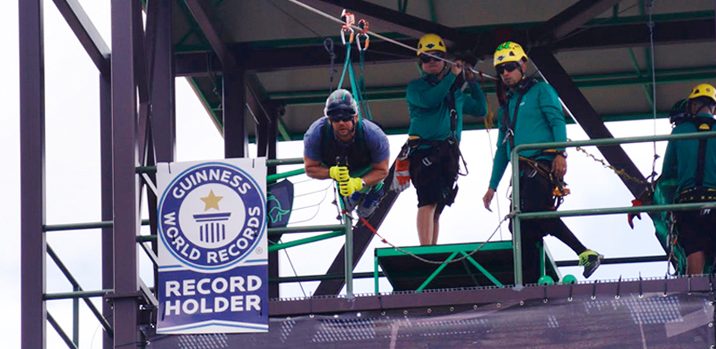
Nearby is the Toro Negro State Forest, an 8,000-acre expanse that reaches into the municipalities of Ponce, Jajuya, Orocovis, Ciales, and Juana Diaz. Toro Negro is Puerto Rico’s highest cloud forest and boasts the island’s highest lake and its three uppermost peaks, topping out 4,400 above the Caribbean Sea, and Atlantic Ocean, both of which can be seen on clear days. The forest tracts include nearly a dozen miles of trails, an observation tower, campgrounds, and picnic areas and swimming holes, known locally as charcos, in cool mountain streams.
Combine culture and cool at La Piedra Escrita, a massive boulder in an Orocovis stream that is etched with hieroglyphs carved by the Tainos, the island’s indigenous inhabitants at the time of the arrival of Columbus on his second voyage to the New World. A long boardwalk leads down to the rock-lined stream and La Piedra Escrita, or the Written Rock, provides a great perch to plunge into the clear and cold water.
To the east, the azure Atlantic and crystalline Caribbean give rise to the palms-studded flanks and emerald ramparts of the El Yunque National Forest, the only tropical rainforest within the U.S. national forest system. Touring by automobile offers some truly stunning scenery, but the best way to uncover this often cloud-shrouded gem is by hiking along one of the various established trails that snake through it. Meander down through the steamy jungle to soak in a natural pool created by a cascading waterfall, washing away any fatigue and providing rejuvenation for the walk back out of the woods.
Yunke Zipline Adventure offers five zip lines and a rappelling course along the forested flank of the El Yunque foothills in Luquillo, a northeast coastal town that is also home to stunning beaches, and an iconic string of food kiosks. Safe, fun, and scenic is Yunke’s mantra. Keep your eyes open as the area is home to a riot of local flora and fauna.
Want to jump right into the action? Why not leave the logistics to one of Puerto Rico’s top of the line providers? Dragonfly Adventures has been generating buzz for decades at its Carabali Rainforest Park, a 600-acre ranch at the base of the El Yunque Rainforest that offers multi-generational activities including horseback riding, mountain biking, all-terrain vehicles, and go-karts. Don’t skip the onsite steakhouse. The tour owner and operator has since expanded beyond the ranch and now boasts offsite venues, restaurants, an event production company, and a hotel.
Sitting off the edge of Puerto Rico’s northeast coast, and within view of El Yunque, are the offshore island towns of Vieques and Culebra. Take the ferry over from Fajardo, a small coastal city that also serves as a launching pad for catamaran and sailboat trips to sandy and palm-lined cays that rise up out of some of the best snorkeling waters in the Caribbean. The fun doesn’t need to end after dark. That’s when the Laguna Grande bioluminescent bay starts to shine, with microscopic organisms known as dinoflagellates light up the lagoon. Conservation-minded kayak tours are the way to go, ensuring that the glow does not wear off for future generations.
Puerto Rico boats three bioluminescent bays and the ones in Fajardo and nearby Vieques are among the world’s brightest.
Nothing says Caribbean getaway clearer than touching down off a secret beach in a seaplane. Seaplanes in Paradise will get you where you want to go, even if you never knew that place existed. Established full-day and half-day self-guided and guided packages are available to explore every angle of Puerto Rico including trips to the offshore islands of Culebra and Culebrita and combined seaplane/catamaran excursions. Don’t hesitate to go custom as the company’s motto is: If you can dream it, we can make it happen.
While adventurous travelers will welcome the fast-paced play in Puerto Rico, they may well find that their vacations went by too quickly. Make the most of precious time by taking advantage of the adventure that is even lurking in and around San Juan. While it revels in its well-deserved reputation as the culinary, cultural, and nightlife capital of the Caribbean, Puerto Rico’s capital city and surrounding environs are by no means a concrete jungle. Sure there are wild times to be had amid the hustle and bustle, particularly after the sun goes down, but the light of day reveals a spectrum of ways to play.
Soak up the sights in sky-high style, and achieve maximum liftoff in a helicopter tour. Imagine hovering over the Spanish-colonial ramparts of Old San Juan with views of the capital’s stunning beaches and flashy financial district. Puerto Rico Helitours offers flights ranging from five minutes to half an hour in the capital. Or take off from the mountain town of Barranquitas, where skilled pilots will fly you into the rarely seen Dos Bocas and San Cristobal canyons.
Vertical Solutions offers charters and a range of half-day and full day tours of spots including the Arecibo Observatory, the Camuy Caves, Toro Verde, and the offshore islands of Culebra and Vieques. Clients can also customize flights.
Staying high and dry is fine, but sometimes you just need to get wet. Why not combine the sky and water with a kite-surfing session. Tap into the wind and the waves at 15 Knots, which offers gear rentals and lessons in Isla Verde, an area that has earned a reputation as a world-class destination for the hot sport of kiteboarding. GoodWinds Watersports & Kitesurf Center in Dorado is also always a good bet. Take advantage of top flight services including gear rental, lessons, radio coaching, and guided tours. Aren’t ready to harness up and hang on? No worries, as the shop also offers guided surf tours that can include jet-ski jaunts to empty outer reefs off Dorado’s stellar coastline.
San Juan is also home to a series of surf breaks to suit everyone from novices to kamikazes. Lessons and board rentals are readily available at Pine Grove Beach in Isla Verde. More seasoned surfers can fill their stoke factors at spots like La Punta in the heart of Condado or La Ocho, a fabled break at El Escambron Beach that may well be among the best truly urban surf breaks this side of Waikiki.
The epicenter of Puerto Rico’s stellar standup paddleboarding is the clear and calm Condado Lagoon, a tranquil place to stay or a base to launch forays into the San Juan Bay or out into the azure Atlantic.
Adventurous anglers will fall hook, line and sinker for the fabulous fishing in and around the capital city. The San Jose Lagoon and Torrecillas Lagoon, interconnected mangrove lined estuaries that provide world-class tarpon grounds, with specimens of the so-called Silver King reaching up to the 100-pound range. There’s still plenty of room for snook, jack crevalle and other sought after sportfish in this inshore saltwater paradise. Or leave the lures behind and tour the liquid maze by kayak, standup paddleboard, or power boat. Either way you’ll be treated to a thriving ecosystem that sits in silent shadow of the international airport, your revelry interrupted only by the jumping of fish, the splash of dive-bombing pelicans and the occasional rumble of a 747 jumbo-jet coming in for a landing.
Rally the whole family for an easy trip to La Marquesa, a 600-acre passive and adventure park at the forested-edge of San Juan, and just 15 minutes from the capital city’s tourism hubs of Condado and Isla Verde. From cable cars, trolleys, and canopy tours to zip lines and rock-climbing, there’s family fun on tap for everyone from five to 95. The ski-lift style cable car is a unique way, especially in the Caribbean, to reach a 70-foot observation tower that offers stunning views of the metropolitan area.
Another can’t miss option is Ecoquest Adventures & Tours, a conservation-minded company that specializes in organizing excursions well within striking distance of San Juan. Hotel pick-up lets clients leave any transportation troubles behind, allowing them to focus purely on fun options including zip lines, rappelling down waterfalls, canopy bridges, and off-road vehicle treks through Puerto Rico’s lush and often overlooked backcountry.
Head south out of San Juan, through Caguas and up to Cayey; the gateway to Carite State Forest, which spans 6,000 acres and is managed as a recreation area by the Puerto Rico government. Camping and picnic areas are safe and scenic. Waterfalls and cool natural stream pools, including the beautiful Charco Azul, can be found.
Combine a Carite excursion with a pit stop at the Guavate area of Cayey, where open-air eateries serve up heaping helpings of criollo classics. Their specialty is lechon, whole spit-roasted hogs that are as delectably moist and tasty on the inside as they are golden and crackling on the outside. Guavate is small, but is not to be missed. You may not even need a map to find it, just follow the scent of the simply stunning victuals being prepared at this favorite grub hub of locals and visitors alike.
Rocaliza Adventure Tours, headquartered in the city of Caguas about 30 minutes south of San Juan, serves up half-day and full-day tours near that Carite State Forest that include canyoneering, hiking, rappelling, and multiple zip lines. Climb upriver using secured reports and then rappel 80-feet down the El Salto waterfall among others.
Ready for rock climbing? Seasoned guides will lead rock hounds of all levels up classic routes at the island’s best crags and boulders, most of which are close to the capital city.
Another great place to get your kicks is in karst country, as the foothills that sweep up from the northwestern coast to the central mountain range are known. The region is marked by limestone outcroppings known locally as mogotes, which create a labyrinthine landscape that is lush and mysterious.
Abundant rainfall and subterranean rivers have carved out porous limestone to create an unseen world of cave systems throughout the karst region. Cueva Ventana, or Window Cave, is one such hidden gem. Climb PR-10 up by car from the coastal plain at Arecibo until you spot the bare bones sign for the cave. A short trek up the woods leads you to the somewhat steep scramble down into the cave. The cave itself is not expansive and its geological features are not the real draw. What keeps visitors draws dropping is the end of the cave, which is essentially a massive opening high up on a sheer limestone cliff that provides incredible views of the bucolic Rio Grande de Arecibo Valley below while the harmless denizens of the dark chasm, in this case bats, flutter overhead.
Take in the vista for as long as you like, but keep your eyes open. It’s a long way down. And you’ve still got some fun waiting just up the hill at Lago Dos Bocas, a mountain reservoir tucked hard in the hills in neighboring Utuado. The fishing is good, but you don’t need to count on catching anything to fill your belly. A few excellent restaurants dot little pockets of the shore and are accessible only by water taxi service, making getting there have the fun as ospreys glide on thermals overhead.
Karst country is also home to the Camuy Caverns River Park, a government-run attraction that takes people deep into an underground world of subterranean rivers, stunning stalactites and stalagmites, and strange creatures. Trolley trains do much of the work but there are opportunities to get out and stretch your legs on walks through soaring caverns.
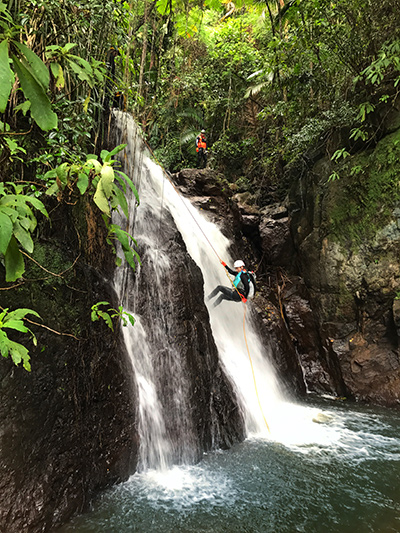
Chart a course for the Tanama River, a cool, clear mountain stream that twists, turns and plummets down from the high-country between Arecibo and Utuado, the heart of Puerto Rico’s remote, rugged and unspoiled karst region and home to one of the few wild populations of the endangered Puerto Rican Parrot. Hidden treasures are revealed at virtually every turn along the river. Hiking in the area is sure to please, but this is one epic adventure that is best enjoyed by jumping in with both feet. Body rafts and inner-tubes are without a debt the best way to explore the caverns, overhangs and rapids of this refreshing liquid trail that traverses through lush jungle
Book a trip with the fun and knowledgeable guides from Explora Multiaventura, Tanama River Adventures or Canyoning Puerto Rico which developed into the first excursion company to offer guided tours to the island’s canyons, cascades and canyoning routes; who will handle logistics, gear and safety.
Bold travelers need not be bound to the ground in Puerto Rico, where the sky is the limit when it comes to kicks. The small airport in Arecibo is home base for sky-diving operators. Learn the basics on the ground and then gear up for a free-fall as butterflies flutter in your belly. Wheels up and in the air to 10,000 feet, it’s time to take the leap. The tandem jump with a certified instructor is a true rush.
Flights of fancy are also on tap in the karst region at the Arecibo Observatory, a massive radio telescope sunken into the top of a mogote. The hands-on visitors’ center provides a glimpse of the important science that continues to be done at the scientific installation. Let your imagination soar as onsite researchers probe the outer reaches of the galaxy.
Make that dream of soaring like a bird come true by learning to hang glide or paraglide. The experienced USHGA-certified instructors at Team Spirit Hang Gliding offer a full range of courses on the art of free flight. Don’t have time to master the sport? Don’t worry. Take a tandem flight with a seasoned pilot. From the launch site on the south side of El Yunque Rainforest, your pilot will work the glider into uplifts and thermals, circling higher and higher. With flights lasting up to 30 minutes and reaching heights of more than 2,500 depending on the weather conditions you are in for the ride of a lifetime and views of the mountains, Atlantic Ocean, and even San Juan, you’ll never again have to wonder what it feels like to soar with the clouds.
Out west, world-class waves have lured legions of hard-core surfers to the island’s northwest corner for decades, but beginners can easily find lessons given by skilled teachers who will get them into the right spots and onto their feet riding swells in no time. Horseback riding along the beach, snorkeling in the protected Tres Palmas Marine Reserve, or scuba diving in the pristine and crystalline waters off uninhabited Desecheo Island or Mona Island are other facets of the northwestern region that make it shine like a beacon for the saltiest of souls. Standup paddleboard excursions along the rarely traveled Guajataca River or inner-tube tube float trips down the Isabel irrigation channels.
Continue down the coast to the Cabo Rojo area, where you can fly fish on the flats, hike along a salt march or head offshore for truly epic deep-sea fishing.
Down and around are the coastal towns of Guanica and Lajas, which are sure to seduce with off-the beaten path adventures to secret beaches and mangrove islets surrounded by bathtub clear waters that are as warms as they are inviting.
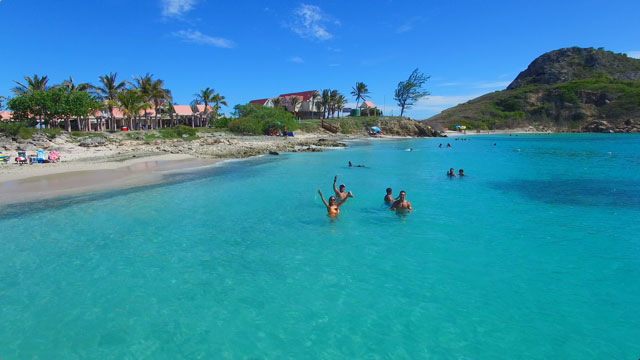
Ponce, the so-called Pearl of the South, is known as the cultural hub of Puerto Rico’s south coast, with a restored downtown area and art museum that can hold its own with some of the more celebrated heavyweights around the globe. It’s also where you can catch a ferry ride out to Caja de Muertos, or Coffin Key, an uninhabited nature refuge that serves as a breeding ground for sea turtles and once served as the stage for Masonic meetings outside of the disapproving eyes of the Spanish crown. Swim with a kaleidoscope of marine creatures and trek through the cactus-studded dry forest to the 1887-Spanish colonial lighthouse that caps this idyllic offshore hideaway.
Adventure-seekers could literally throw a dart at a map of Puerto Rico and probably hit on something, somewhere that would surely get their juices flowing. A good time is guaranteed, whether setting of on your own, or opting for a guided excursion, as the island surrounds you with opportunities to push boundaries up in the mountains, down below ground, along epic coastlines, under water and high in the sky.
Either way, it should be abundantly clear that Puerto Rico serves up an endless array of adventures for travelers of all ages. So many that the Enchanted Island could also be called the Excitement Island.
Plenty of excitement at Camarero racetrack
Infectious energy, the majesty of the thoroughbreds, jockeys wearing vibrant silks, and stunning park-like grounds with El Yunque mountains as a backdrop is the perfect way to describe the setting at Camarero racetrack.
Puerto Rican jockeys have proven their dominance
for decades at top racetracks in the world.
Infectious energy, the majesty of the thoroughbreds, jockeys wearing vibrant silks, and stunning park-like grounds with El Yunque mountains as a backdrop is the perfect way to describe the setting at Camarero racetrack.
If you enjoy horse racing, or just want to spend a few exciting hours during your vacation in Puerto Rico– than add this on your To-Do list.
Grab your binoculars and sunscreen for a fun-filled day of fresh air and adrenaline, and hopefully you’ll leave with some extra money in your pocket.
“To see a live race is very different than seeing it on TV,” said Alejandro Fuentes, executive vice president at Camarero Inc., the Puerto Rican company that manages the racetrack and horse racing business on the island. “You get to hear the fans cheering for their favorite horse and the sound of the horses galloping on the track; it’s truly exhilarating.”
Camarero is the island’s only horse racing track located 15 minutes from the Isla Verde hotel sector and a 20 minute drive from San Juan taking Route 66. There is plenty of parking, admission is free and the norm is casual attire.
Back on Track
Race days at Camarero are Thursday, Friday, Saturday, and Sunday with post time at 2:50 p.m., and a fifth day will be added soon. However, Sunday is the perfect day to go for people watching.
If it’s your first visit to a racetrack, you may get a more rewarding experience finding a spot where the entire track can be seen. The horses are paraded about 10 minutes before each race prior to trotting off to the starting gate. You sit outdoors at the grandstand –which is an open air multi-leveled seating near the center of the action where you can watch the parade, race, and winner circle picture taking up close and personal. Kids, especially, will enjoy this part of the track.
The Clubhouse and Terrace Restaurant, THE place where horse owners and anybody who simply preferred to leisurely eat a meal in air conditioning while watching the races through its huge windows, is currently closed and expected to be reopened soon.
Learning the ins-and-outs of how to bet before you arrive at Camarero will save an incredible amount of time. So get a racing program, pick your horse of choice, and hurry to the betting window and hope the odds are in your favor. Stick to a budget. A racetrack can be one of the most affordable entertainments around.
There is important information you need to know before you approach the clerk’s window: the race number, dollar amount of your bet, type of bet and number (NOT name) of the horse(s) you’re betting on. The types of straight wagers are win, where you pick a horse to finish first; place, where you select a horse to finish first or second and show, where you pick a horse to finish first, second, or third.
Exotic wager bets include exacta, where you pick the first and second place finishers in the exact order and trifecta, where you pick the first, second, and third place finishers in the exact order; and the multi-race bets that include daily double (pick the winner in two consecutive races), pick three (choose the winner in three consecutive races), pick four, pick five and pick six referred to as el Poolpote in Puerto Rico.
Payouts are determined by the number of horses in the bet, the odds, and the wager amount.
Daily wagering at Camarero currently fluctuates $400,000 to $500,000.
Its monthly event “Night at the Races,” where the race card begins early, followed by a live band is expected to make a comeback soon. This event, held every Friday night, attracts a large crowd and high number of wagering.
“It is like a whole world in itself, an entire industry revolves around the track activity,” said legendary racetrack announcer Norman H. Davila, who is one of the faces and voices of Puerto Rico horse racing.
There are more than 1,000 employees and contractors at the racetrack, especially in the stables – from hot walkers, grooms and trainers to blacksmiths and vets.
“When you add up indirect jobs there are about 8,000 that include owners and employees in over 400 off track wagering agencies island-wide, the horse breeding farms, producers and distributors of food,” said Fuentes.
An island full of world-class jockeys
In horse racing there are two types of athletes: the horse and the jockey. Puerto Rico has had its share of excellent thoroughbreds that have won important international races like the Caribbean Classic. Half of the 600 horses that normally are active on the island are native specimen while the rest are imported mainly from the U.S. mainland. But more impressive are our exceptional Puerto Rican jockeys who have proven their dominance for decades at top racetracks in the world.
Camarero’s horse racing vocational school, affiliated to the Puerto Rico Horse Racing Administration, is where trainers, blacksmiths, and jockeys are trained. This school graduates about 15 jockeys a year that begin their racing careers as apprentices. In the 1960’s and 1970’s, several young apprentices ventured out into the racing circuits in Florida, New York and California, three states that have some of the most important racetracks in the world, in order to test their luck and begin demonstrating their talent.
Puerto Rico’s pioneer adventurer was jockey Eddie Belmonte who attracted attention in the New York racing circuit and was the first Puerto Rican to win a race (Preakness) of the Triple Crown aboard ‘Personality’ in 1970.
Jockey Angel Cordero followed suit and dominated for years the racing circuit in New York at Saratoga, Acueduct, and Belmont Park racetracks. He competed for 30 years (1962-1992) and was the jockey with the most earnings on four occasions in the U.S., Canada and Puerto Rico. Cordero, referred to as the King of Saratoga, has the most wins in Triple Crown events including three Kentucky Derby victories.
John Velazquez has been active in New York since he left at the young age of 18 in 1990. He is also another Puerto Rican superstar in the horse racing scene.
Velazquez has been a leader in earnings for four consecutive years (2001-2004) and has won two races of the Triple Crown – the Belmont Stakes in 2007 and the Kentucky Derby in 2011.
In the past two years, besides Velazquez, there have been other Puerto Rican jockeys who have stood out in the U.S. mainland horse racing panorama – brothers Irad Ortiz and Jose Luis Ortiz. The Ortiz brothers have been ranked among the top five jockeys in the U.S. mainland in overall earnings.
In 2017, the 24 year-old Jose Luis won the Eclipse award for being the most outstanding jockey in the U.S. for highest earnings ($22.9 million) while the 25-year-old Irad was the jockey with most wins.
By winning an Eclipse Award, Jose Luis has joined the exclusive club of Cordero and Velazquez, an honor comparable to winning a MVP award in Major League Baseball.
Juan Carlos Diaz, the King of Camarero
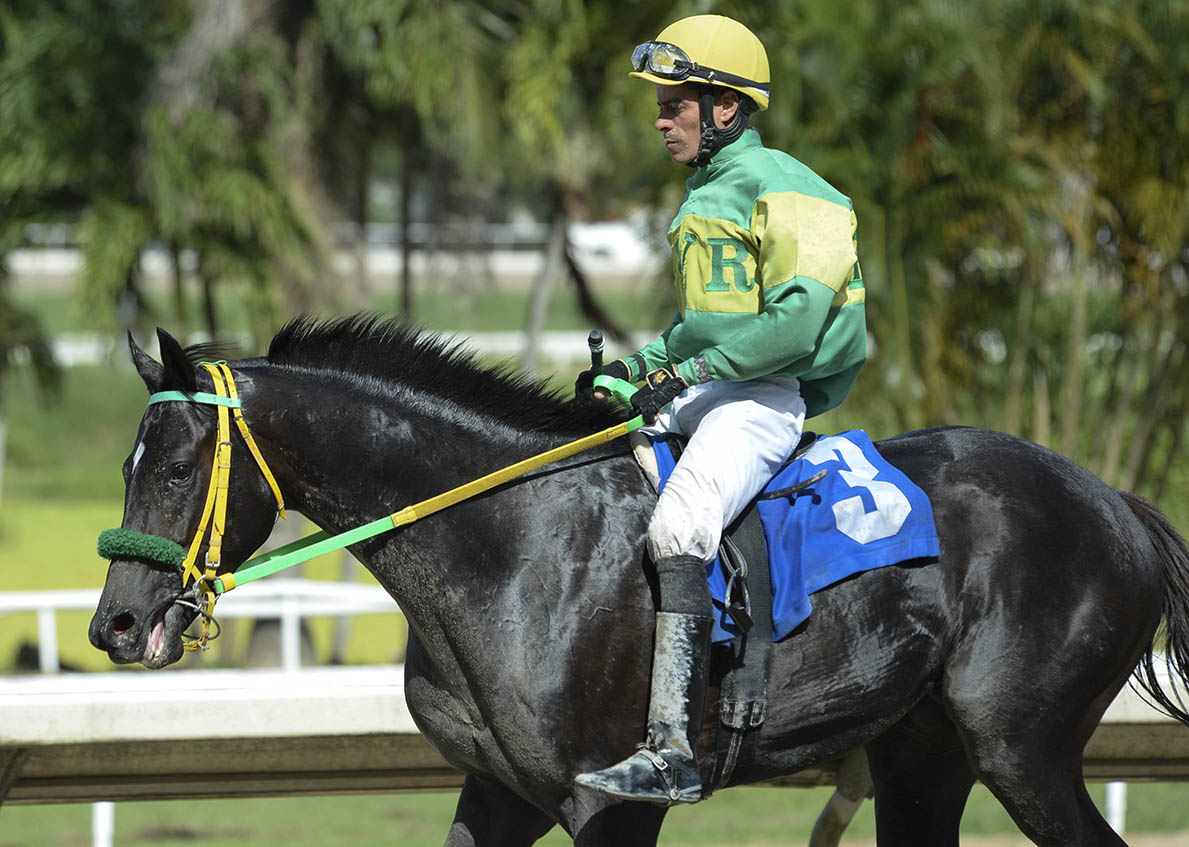
Nevertheless not all stellar jockeys migrate to the north.
When at Camarero racetrack and making a wager you may see names like Edwin Castro, Hector Berrios, Javier Santiago, Wilfredo Rohena, among others on the racing form that offer a guarantee that the horse will be in good hands and could possibly be a winner.
However the most outstanding of the local crowd is currently Juan Carlos Diaz, a jockey that holds the title of having the most wins in Puerto Rico’s horse racing history with more than 4,700 victories under his belt. He has also been the leader in victories and earnings for 17 straight years showing his absolute dominance on the island.
“I have had the opportunity to ride in the U.S. but have decided to stay in Puerto Rico because I have led for many years here and am economically solid,” said the 40-year-old Diaz. “I have my home and family in Puerto Rico and my son is enrolled at the jockey school.”
Besides Diaz’ family life, that has a major role in his decision to remain in Puerto Rico, there are other factors.
Diaz was raised near the ocean – not riding sea horses but rather fishing, scuba diving and surfing, even though he loves horses. His passion for surfing and boats continues despite the fact he has to be at the track at 10 a.m. to then race from 2 p.m. to 6 p.m. four days a week. But he does find a way to escape to the beach to ride those waves.
“Sometimes after the morning workouts at the track, if there are waves, I escape to surf for an hour in Luquillo at La Pared or La Selva beach and then return to the racetrack. Besides the fact that I love the ocean and it relaxes me, it’s a good workout and provides balance, which helps me as a jockey.”
Come and witness the passion of Puerto Ricans as they cheer on riders like Diaz and play the Poolpote jackpot, and if you are lucky to pick all six winners of the afternoon’s race card you can win lots of money. Feel the excitement of seeing your horse fight for the lead and who knows maybe you’ll have beginner’s luck.
Land of mixology
Whether you fancy the classics like a Moscow Mule or an Old Fashioned, or seek the thrill of a hot new alcoholic elixir, you won’t be disappointed. The island’s urbane cocktail map leads to an eclectic mix of hip bars and lounges where dedicated mixing professionals whip up memorable cocktails for today’s discerning drinkers.
Add artfully crafted cocktails to your list of things to look forward to when visiting Puerto Rico.
Whether you fancy the classics like a Moscow Mule or an Old Fashioned, or seek the thrill of a hot new alcoholic elixir, you won’t be disappointed. The island’s urbane cocktail map leads to an eclectic mix of hip bars and lounges where dedicated mixing professionals whip up memorable cocktails for today’s discerning drinkers.
Bars are aplenty in Puerto Rico, people are drinking and having fun, and there are plenty of beverage practitioners behind bar counters ready to satisfy the thirst for tantalizing libations.
Menus cater to the casual drinker or the cocktail obsessive. You’ll find the new, the classics, and the latest trends, like the current resurgence of Polynesia-inspired Tiki cocktails, heady mixes of high-octane rums and fruit flavors, syrups based on almonds, coconut or pineapple, cherry and banana liqueurs just to mention some of the ingredients that go into these favored concoctions.
Equally popular is the emphasis on health and farm-to-table. Cocktails made with vegetables and fruits are all the rage these days and Puerto Rico’s beverage practitioners are finding exciting ways of pairing spirits with unlikely partners such as spinach, cucumbers, beets, tomatoes, and fresh herbs like basil, sage, mint, or rosemary, some of which are locally sourced for an even fresher, healthy taste.
Thanks to competitions that advance brands and promote higher levels of creativity among the island’s bartenders, the opening of new bar concepts and the rise of the mixologist, Puerto Rico can pride in having a world-class cocktail scene.
“The cocktail scene in Puerto Rico has grown 150 percent in less than five years. We’re at the level of many cities in the world,” enthuses Roberto Berdecia, a World Class bartender and co-owner of several bars, including Jungle Bird on Canals Street, off the famous Santurce market, and the popular La Factoria in the historic section of San Juan.
Based in what was once old San Juan’s most iconic bar, Hijos de Borinquen (The sons of Borinquen), La Factoria is actually four distinctive bars within an old corner building whose rundown facade and maze-like interior affect a carefully cultivated environment of chick grunge, in the style of a grand movie set.
Soon, it will add another three bars: one on the second floor and the other two stem from the recent purchase of La Cubanita, next door to La Factoria. Actually, both businesses are part of the same building so connecting the new spaces was no problem.
“We have bartenders who in competitions rank among the top four in the world and bars that have won prizes at the national and international level. I always think we still have a ways to go, but I believe that’s how you keep growing,” Berdecia said.
Star bartender Luis Pagan from La Coctelera, a small but very pleasant bar on Loiza Street, near the Condado tourist area, agrees the cocktail scene is flourishing but finds the local palate needs to expand a bit further to be on a par with the leading drinking capitals of the world, “the island has very good bartenders and the level of creativity is growing,” said Pagan, who is considered among the island’s top 10 bartenders.
Further proof of Puerto Rico’s rising status as a land of mixology is the scheduled opening of a rarefied resource: a laboratory to foster experimentation and innovation in the craft of mixing drinks.
The brainchild of Berdecia and his Factoria partners, Leslie Cofresi and Pablo Rodriguez, the lab called Licoreria Miramar will be open to professionals and aficionados on a membership basis. The 4,000-square-foot space, in San Juan’s Miramar section, will have all the equipment necessary for users to explore new ideas and techniques.
Such creative laboratories dedicated to alcoholic beverages are not unheard of even if the concept owes credit to Spanish gastronomic superstar Ferran Adria whose famous restaurant el Bulli, on Spain’s Costa Brava, functioned as a laboratory for the creation of haute cuisine dishes. Adria popularized molecular gastronomy by applying principles of physics, chemistry, and biology to the preparation of food, creating spectacular new flavor sensations. Not surprisingly, the world of spirits was inspired to pick up this new science, bringing the art of mixology to a whole new level.
Basically, bartenders and mixologists aim for the same thing: to deliver a wow drink. Still, there are differences between the two roles. Bartenders know all the basic drinks and tend bar; mixologists spin the old classics into exciting new cocktails and create new taste experiences using different techniques. The two categories are not mutually exclusive: a bartender can also be a mixologist and vice versa.
Further proof of Puerto Rico’s rising status as a land of mixology is the scheduled opening of a rarefied resource: a laboratory to foster experimentation and innovation in the craft of mixing drinks.
Being a mixologist calls for a great deal of knowledge, according to Jorge Lopez Albarran, outgoing president of the Puerto Rico Bartenders Association. An affiliate since 1992 of the International Bartenders Association, the group, which has around 800 members island wide, has contributed to professionalizing the field through workshops, courses, and competitions whose winners go on to participate in international events, such as the upcoming Pan-American Cocktail Championship in Havana, Cuba, in August, and the IBA World Cocktail Championship to be held in Estonia in October.
Think of the mixologist as a type of polymath. As described by Lopez, he must know about spirits, wines, coffee, the pairing of foods and drinks, which spirits go best with cigars and chocolate. Lopez is an award winning master blender and consultant whose company, Gourmet Business Solutions, supplies ingredients like syrups used in making drinks and foods.
He also must know about molecular mixology, nutrition, and techniques like infusing and smoking cocktails. According to Lopez, “He must have more experience and years of study.”
Puerto Rico has various educational institutions that train people for work as a bartender or mixologist but this is a career that some take up without any formal training. Others come to it by chance as happened to bartender/mixologist Roberto Rodriguez, the owner of Tablas Restaurant in Salinas, on Puerto Rico’s South coast.
Rodriguez, who is 34, took a job in the banquets division of the Ponce Hilton Hotel to earn extra money while studying to be a physical education teacher at the Pontifical Catholic University of Puerto Rico in Ponce, where he excelled as an elite athlete. When a position opened up at the bar, he signed up out of curiosity. Besides, none of his co-workers was interested. He had no experience mixing drinks but he knew he was a quick learner and could rise to the challenge; besides, as he told his superior, “Tell me the recipe once and I can repeat it for the rest of my life.”
Although he went on to study cooking at the Institute of Banking and Commerce and bartending at the Puerto Rico Hotel School, Rodriguez admitted he wasn’t convinced bartending could be a permanent career but in 2009 he represented Puerto Rico at IBA’s annual competition in Berlin and “it opened my mind. It taught me this was a serious profession and you could live off it.” More importantly, “I didn’t win this competition but it made me completely fall in love with the industry,” Rodriguez said.
In 2013 and 2014, Rodriguez was part of the Puerto Rico Hotel and Tourism Association culinary team that won the Taste of the Caribbean competition. He has been named Bartender of the Year and Bartender of the Caribbean, also entering the mixologists’ hall of fame in these competitions.
A year and a half ago Rodriguez parlayed his experience working in hotel and independent bars into opening his own business, Tablas Craft Cocktail, a breezy open air restaurant in Salinas that features more than two dozen cocktails of his own creation that have been recognized in local and outside competitions. “I’m doing very well but it was a challenge after Maria,” he said.
La Coctelera’s Pagan is a slightly built young man with a hip hop haircut and an easy smile who looks younger than his 30 years of age. Turns out that he’s a natural at his craft and never formally studied to be a bartender. In fact, his first experience as a bartender was kind of a trial by fire. He was working in a restaurant while going to college and one busy December day the bar was short an employee and he was asked to fill in. He had made it a habit to watch the bartenders at work so he managed just fine.
Tending bar didn’t last long, however. Pagan said he dropped out of university when his mother fell ill and decided to study holistic medicine, going on to work for many years as a masseur. Four years ago he came back to bartending only to find to his surprise that the cocktail scene had changed dramatically: different cocktails, new ingredients, mixologists, homemade infusions.
To get up to speed he studied on his own and signed up for competitions. In 2016 he was a finalist in the Puerto Rico edition of the Diageo World Class event and last year he won the title of Bombay Sapphire Most imaginative Bartender by preparing two cocktails — one creative and the other a gin and tonic — in the assigned time of 13 minutes. Named “The Four Thieves,” his imaginative drink struck an intriguing balance of tastes and aromas from ingredients that included Bombay Sapphire gin, lime juice, spice-infused honey syrup featuring clove, eucalyptus and cinnamon, rosemary sprigs and sage leaves.
“Competitions are a challenge, they motivate you to be more creative,” he said in an interview at La Coctelera, which has a simple but appealing decor. Its centerpiece, next to the bar counter, is a striking wall assemblage of square and rectangular blonde-wood cabinets filled with colorful liquor bottles.
Puerto Rico has plenty of liquor competitions. According to Joel Vasquez, American Beverage Marketers’ Caribbean general manager, the island’s liquor distributors have created their own competition platforms “in order to give value to and elevate the knowledge about their brands.” International competitions with Puerto Rico editions also provide exposure for local participants.
Mixo Madness, an event developed by the Crafted Barrel Group for Rums of Puerto Rico, seeks out the best bartenders in various categories; winners go on to compete on the mainland at a grand finale pitting finalists from other states. Bartenders are rated on how well they mix flavors, knowledge of local rums, technique, even how they express themselves and interact with the public.
Another CBG event is the Speed 4 Tips competition: it tests the bartender’s speed, correct usage of techniques, ability to remember recipes, neatness and precision.
The biggest competition in the world is the Diageo Reserve World Class which is held in 60 countries, including Puerto Rico and since its launch in 2009, this competition “has supported, educated and inspired over 250,000 bartenders through its training and advocacy program,” according to the World Class Club website.
For participants, competitions are not just an opportunity to show off their skill, talent and professionalism but also a chance to learn from interacting with and observing other professionals. It doesn’t hurt that prizes include traveling, either nationally or internationally, as an ambassador for the sponsoring liquor brand.
Sometimes, a competition can prove a turning point for a bartender as was the case for Tablas’ Rodriguez, or even teach an important lesson as happened to Berdecia when he participated in the 2011 World Class Final held in India. He had won the Puerto Rico leg of the competition with two creative cocktails, one of which he named in honor of murdered Guatemalan environmental activist Myrna Mack. A variation of the Classic Rob Roy, a mix of Scottish whisky with vermouth and amaro, his version teamed up Guatemalan Ron Zacapa with vermouth, apple infusion and orange amaro.
Although he prepared for the international showdown by reading 10 to 15 books of recipes, Berdecia realized that winning wouldn’t be easy. So he recalibrated his attitude and decided that “instead of going to win, he would go to learn.”
Over at the Wine & Spirits Wholesalers of America in Las Vegas, Puerto Rican mixologist Joymar Herrin took the People’s Choice category with her concoction Sand Break made out of 3 Star Barrilito Rum.
Sand Break also has a pinch of orange, coconut, lime, egg white and a splash of Disaronno amaretto. Combine all ingredients in shaker and serve in a glass with its rim covered with brown sugar and coconut.
“Sand Break is my interpretation of the moment right before emerging in the ocean. Your feet are in the sand and the waves are breaking on the edge. As a good ambassador of my island I like to use quality products that presents something authentic and traditional of Puerto Rico,” said Herrin.
Puerto Rico’s bar scene is evolving and getting better. In recent years, bartenders have noticed a greater openness by local drinkers to try out new drinks instead of staying within the confines of a safe comfort zone.
Drinkers are more demanding and are changing consumption habits: they are more likely to savor a few cocktails than drink to excess, according to Tapas’ Rodriguez.
They also are more informed and will look up information about cocktails on the internet so they know if the bartender gets it right, Lopez said.
In a service industry based on making people feel good, the experience of having a great drink in a great bar is ultimately what brings repeat customers.
“People may forget your name, the drink you fixed for them and even what you talked about but they never forget how you made them feel, how you treated them, the service you gave,” said Pagan.
If the bar and bartender made the person feel good, you can be sure they’ll be back.
Altitude is the hottest new cocktail ingredient
Puerto Rico, known as the Culinary Capital of the Caribbean, has some amazing restaurants with stunning decor, but nothing beats a hot rooftop bar. Chilling on a rooftop never gets old especially when combining breathtaking views, tropical Caribbean breezes, and world-class cocktails.
Puerto Rico, known as the Culinary Capital of the Caribbean, has some amazing restaurants with stunning decor, but nothing beats a hot rooftop bar. Chilling on a rooftop never gets old especially when combining breathtaking views, tropical Caribbean breezes, and world-class cocktails.
Whether you are seeking spectacular views of the ocean, bay, cobblestone streets, historic homes, or a bustling city, you’ll find what you’re looking for at these cool, classy, and spectacular rooftop bars.
Eter Rooftop & Lounge
After a long day, the Eter Rooftop at Ciqala Luxury Suites in Miramar with its endless views of San Juan is the ideal place to watch the sunset, or take a dip in the pool accompanied by seasonal cocktails and scrumptious culinary Caribbean infusion creations.
The View: Miramar and San Juan Bay.
What to Order: “Mofongo” stuffed with skirt steak.
Insider Tip: Brunch of champions every weekend with free valet.
Location: 752 Ave. Manuel Fernandez Juncos, San Juan; (787) 998-1176.
MIST ROOFTOP Bar+Kitchen
At MIST ROOFTOP Bar+Kitchen at San Juan Water Beach Club Hotel, you get awe-inspiring vistas of the Atlantic Ocean, white sand beach, and the incredible skyline of Isla Verde glittering with towering hotels and condos. The MIST ROOFTOP ambiance features sexy white pillow sofas and couches for total relaxation, a custom designed Cîroc bar serving a unique selection of cocktails and wines, and a restaurant with mouthwatering lunch, dinner, and a one-of-a-kind brunch culinary delights.
For a seductive evening under the stars, the MIST ROOFTOP offers daily Happy Hour specials as well as the sounds of electronic and house music.
The View: Atlantic Ocean and Isla Verde skyline.
What to Order: Signature pizza verde with Boursin cheese, kale, brussels sprouts, asparagus and mushrooms and risotto sprouts served with pork, butifarra and pecorino cheese.
Insider Tip: Things heat up with DJs spinning house and lounge music from Thursday to Saturday, starting at 9 p.m.
Location: 2 Tartak Street, Isla Verde; (787) 728-3666.
Al Fresco Rooftop Wine Bar
Located on the corner of Sol and Cruz streets in Old San Juan, this super cozy terrace perched atop a colonial rustic orange painted building is also home to the quaint and amazing St. Germain Bistro & Café and The Mezzanine bar, which serve a variety of delicious, mouthwatering tapas and fine wines.
The View: Historic Old San Juan.
What to Order: Homemade sangria or wine with tapas.
Insider Tip: Thursday nights are Ladies Night! Enjoy 2-for-1 drinks from 4 p.m. to 8 p.m.
Location: 156 Calle Sol, Old San Juan; (787) 723-3427.
Punto de Vista
Located on the rooftop of the Hotel Milano in Old San Juan, Punto de Vista has a well-deserved reputation for serving the best mofongo relleno in the city. A glass wall spanning the width of the dining room offers its guests views for days while drinking and dining outdoors provides vistas of the capitol building, San Cristobal Fort, San Juan City Hall, the San Juan Bay and Calle Fortaleza below. So bring your camera or pop out your Iphone and be ready to capture amazing selfies with stunning sunsets in the background.
The View: Old City and San Juan Bay.
What to Order: Mofongo (garlic-flavored mashed plantains) with choice of chicken, shrimp, pork or skirt steak with fresh garlic sauce or sautéed in a white wine mango peach creole sauce.
Insider Tip: Tip: Buy 1 get 1 free mojitos every day until 5:00 p.m. and Medalla beer on tap for just $2.
Location: 307 Calle Fortaleza, Old San Juan;(787) 725-4860.
Olive Boutique Hotel
O:live Rooftop atop the luxury O:live Boutique Hotel is the epitome of chic and sophistication, where even its location screams exclusivity. It’s rooftop bar even has a pool, completing the ultimate oasis package. The Rooftop offers a taste of the high life inspired by the Mediterranean travels of the property’s owners, attentive and helpful staff that looks out on the high-rises of Condado and the waters of the Condado Lagoon.
The View: Condado Lagoon.
What to Order: Order a bite from the enticing menu of Sage restaurant operated by Chef Mario Pagan, one of Puerto Rico’s top chefs who participated in Food Network’s Iron Chef.
Insider Tip: Must try signature drink Kiwi Collins especially at sunset.
Location: Aguadilla St. #55, Condado; (787) 705-9994.
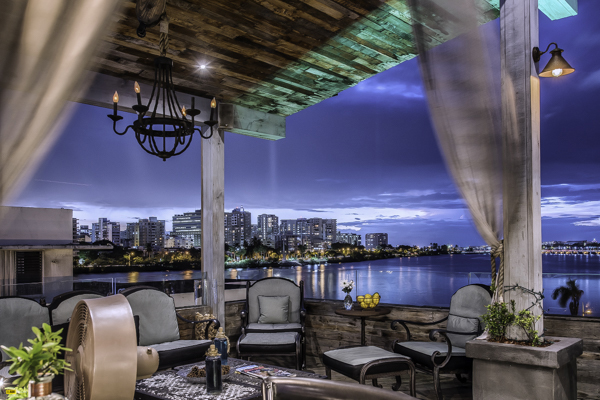
O:live Rooftop looks out on the high-rises of Condado and the waters of the Condado Lagoon.
La Terraza de San Juan
Nothing is more relaxing than taking a dip in a rooftop terrace infinity plunge pool while enjoying birds eye views of Old San Juan and sipping a tropical drink from its patio bar. Guests can chill out watching cruise ships come and go, admire beautiful sunsets over the Old City and San Juan Bay. On the very clearest of days, you can see El Yunque Rainforest, located at the eastern end of Puerto Rico.
The View: Old San Juan and San Juan Bay.
What to Order: Mimosas and smoothies.
Insider Tip: Tasty tapas and cocktail menu in evenings from Thursday to Saturday.
Location: 262 Calle Sol, Old San Juan; (787) 722-2014.
AC Rooftop
Indulge on delicious drinks, warm breezes, and superb dining at this unique rooftop lounge at AC Hotel San Juan that features a swimming pool and one-of-a-kind views of the bustling Condado district. This stylish property with a European urban vibe is steps away from the beach and has modern décor with contemporary furnishings.
The View: Condado District.
What to Order: Light tapas.
Insider Tip: Co-working space by day and hub of social buzz by night with live DJ and bands.
Location: 1369 Ashford Ave, Condado (787) 827-7280.
Bay Pool Bar & Grille
The rooftop Bay Pool Bar & Grille at the Sheraton Puerto Rico Hotel and Casino overlooks the marina in the heart of the city that captures vibrant ocean and bay views, as well as the city’s varied cityscape, from the gleaming condo towers of Condado to Spanish colonial splendor.
The terrace situated on the hotel’s fourth floor has plush sofas and cabanas, and a great bar and grill; there is nowhere else you will want to be during a splendid San Juan afternoon. There is an impressive menu of tropical cocktails and frozen drinks, and a simple menu that delivers with great taste.
The View: San Juan Bay and cruise port.
What to Order: Chino Latino wrap, fish tacos, mahi mahi skewers and guava chicken wings.
Insider Tip: Reserve your pool cabana early; voted one of the best hotel pools in Puerto Rico by US News.
Location: 200 Convention Boulevard in San Juan, (787) 993-3500.
Vistas
Vistas rooftop terrace at Vistas Restaurant and Cocktail Lounge has spectacular panned views of the city of Ponce.
Imagine sitting high above the town on a warm and sultry evening while sipping on a cocktail experiencing a cosmopolitan vibe while overlooking at one of the most recognizable landmarks in Puerto Rico, Parque de Bombas (former Ponce Fire House) with its emblematic black and red colors and Cruzeta El Vigia (The Watchman Cross). The staff at Vistas is friendly and the food is yummy as well.
The View: Nearly all of Ponce.
What to Order: Pasta, pork loin, St. Louis ribs, BBQ chicken and mofongo.
Insider Tip: $4 Margaritas Happy Hour every Tuesday and Wednesday and a 2-for-1 Mojitos and Sangria Happy Hour every Thursday from 4 p.m. to 11 p.m.
Location: Cristina Street #76, Ponce; (939) 350-2407.
So make sure you take advantage during your visit of Puerto Rico’s near-perfect year-round weather and stress-reducing views.
Back Into the Swing of Things
Puerto Rico’s rebound in the wake of Hurricane Maria can be likened to a round of golf at one the islands world-class courses —there was bound to be some rough, some ups and downs, and some unexpected turns along the way. And while landscapes may change, the renewal of the island’s lush greens seemingly blossomed overnight as its mountain forests, palm-lined coasts – and yes its 18-hole oases – sprang back to life under the healing tropical sun.
Puerto Rico’s rebound in the wake of Hurricane Maria can be likened to a round of golf at one the islands world-class courses —there was bound to be some rough, some ups and downs, and some unexpected turns along the way. And while landscapes may change, the renewal of the island’s lush greens seemingly blossomed overnight as its mountain forests, palm-lined coasts – and yes its 18-hole oases – sprang back to life under the healing tropical sun.
Like many of its best hotels, Puerto Rico’s golf courses seized the opportunity presented to grow back better than ever through a host of upgrades including a new fleet of GPS-equipped golf carts at Dorado Beach through the remodeled club house and re-imagined courses at Rio Mar, to cite just two examples.
Check out Costa Caribe to Coco Beach and El Conquistador, Palmas del Mar, Punta Borinquen and beyond, where restoration contractors who arrived on the island in droves could be heard extolling the virtues of Puerto Rico’s range of golf courses on their hard-earned days off from the work of rebuilding.
Puerto Rico is known as the premier location for golf professionals and enthusiasts in the Caribbean where golf enthusiasts travel from all over the world to play throughout the year on the island’s 20 championship golf courses. This year’s tournament calendar features the PRGA’s annual signature event, the PRGA Championships, as well as seven World Amateur Golf Ranking (WAGR) points tournaments for both juniors and amateurs. For the second straight year, Puerto Rico will also host a USGA U.S. Am qualifier.
With global media attention focused on Puerto Rico’s challenges and can-do attitude, the island’s profile in the golf world was also elevated through the likes of its touring professionals such as Maria “Marife” Torres, the first Puerto Rican to play full time in the LPGA and Rafael Campos’ solid presence on the PGA Web.Com Tour.
Further shining a bright light on Puerto Rico’s competitive golf scene were a range of signature tournaments stretching from spring into winter – no need to worry about the weather on an island where balmy 80 degree days are the rule.
July 9-10
USGA US Amateur Qualifier
August 11-13
PRGA Junior Match Play Championship
November 2-4
PRGA Match Play Championship
But the biggest sign of the solidity of the island’s competitive golfing future may well have been the PGA’s bet on bringing the PGA Tour’s Puerto Rico Open back to the island at least through 2020.
Dating back a decade, the 2018 event could have been carried out, but the PGA Tour and the main sponsor the Puerto Rico Tourism Company opted instead to hold a special, unofficial PGA Tour event in March to support recovery efforts on the island featuring PGA Tour golfers, athletes and celebrities. The charitable event was held at the TPC Dorado Beach, which is home to three legendary championship golf courses, including the famed East and West courses originally designed by Robert Trent Jones Sr. Since its inception, the Puerto Rico Open has supported the work of local charities and donated nearly $700,000 to non-profit organizations that work with children, youth and health-related issues.
While putting relief before dollars was a move right from the heart, the PGA Tour doubled-down on Puerto Rico when it inked in the return of the four-day, official PGA Tour event in 2019 and also in 2020.
“The Puerto Rico Open has been part of the PGA Tour for the last 10 years and our commitment to golf on the island has never been stronger,” said PGA Tour Commissioner Jay Monahan. “Our hope is that this special event in 2018 would benefit Puerto Rico’s recovery efforts to the fullest extent, while reminding the world that Puerto Rico is a premier golf and travel destination.”
In partnership with tournament officials and the PRTC, the PGA Tour heavily considered all factors following Hurricane Maria to determine a course of action for the 2018 Puerto Rico Open and examined what would provide the greatest support and economic impact for the island during this period of recovery. Therefore, the tournament in Puerto Rico was re-imagined as a special, unofficial PGA Tour event to support the recovery efforts and to celebrate golf and Tourism on the island.
Toast a new life among art and whimsy
Happy couples dancing inside an iconic building designed by MoMA architect Edward Durell Stone greet their guests among masterpieces by Jose Campeche and Francisco Oller, and pose for photos in front of a soaring sculpture by American pop artist Roy Lichtenstein or outdoors in an awe-inspiring romantic botanical garden.
Happy couples dancing inside an iconic building designed by MoMA architect Edward Durell Stone greet their guests among masterpieces by Jose Campeche and Francisco Oller, and pose for photos in front of a soaring sculpture by American pop artist Roy Lichtenstein or outdoors in an awe-inspiring romantic botanical garden.
Puerto Rico’s chic museums shine as bright as the island’s blazing blue skies, shimmering Caribbean waters, and sultry nights. They provide beautiful and unique venues to host wedding receptions with dramatic spaces, open courtyards, elegant galleries, and other variety of rooms so the special day can be remembered for years to come.
All across the country, museums of art, history, and science are opening their doors for wedding receptions—and an increasing number of brides and grooms are discovering: There’s no better place to hold their own historic events, and Puerto Rico is no exception.
Puerto Rico definitely has plenty of stunning hotel ballrooms that make for lovely venues, but commemorating your special day in a museum is unique. They offer great backdrops for wedding portraits, as well as vast indoor atriums and halls that comfortably accommodate hundreds of guests for dining and dancing. Best of all, museums often offer exclusive access to their collections. Guests can enjoy a one-of-a-kind wedding experience as they mingle among masterworks dating back to the 17th century to the present and world-class temporary exhibitions.
The Museum of Art of Puerto Rico situated between San Juan’s Condado bustling tourism hub and its cultural hub of Santurce is especially popular with couples who want a level of luxury. The main room, where you dine and dance is called the Grand Hall (which can fit up to 600 guests) and it’s sure to impress. It has a height equivalent of three stories and has a spectacular stained glass window designed by Puerto Rican artist Eric Tabales where the natural light from outside softly illuminates the entire area; and cocktails can be served outside overlooking a lush and beautifully manicured botanical sculpture garden.
Its 2.5 acre botanical sculpture garden is a true oasis that can transport the wedding guests a world away from the bustle of the city and can be combined and tented for a magical seated dinner for up to 130 guests. A walkway around the free-form pond eases through individual settings including a grove of native trees, a bamboo forest, and a prairie. More than a dozen sculptures are positioned in harmony with the scenery while several gazebos serve as perches for rest and relaxation. A terrace with a natural amphitheater sets the stage for open-air events.
Designed in accordance with the strictest and most modern standards, the Museum of Art of Puerto Rico was built by architect William H. Schimmelpfennig in 1920 and its 130,000 square feet of space includes 24 exhibition galleries.
Just blocks away is the Puerto Rico Museum of Contemporary Art in Santurce, which offers brides, grooms, and guests urban charm and historical elegance. Housed in a small but charming building, guests at the Puerto Rico Museum of Contemporary Art can stroll through galleries of work ranging from paintings and sculpture to mixed-media, sound, and video installations. But the party happens within its enchanting interior courtyard that can accommodate about 500 wedding guests.
The Puerto Rico Museum of Contemporary Art used to be a former public school built in 1918. The Georgian-style structure designed by architect Adrian C. Finlayson as part of a U.S. Department of Education’s drive to build public schools in urban zones, has been on the National Register of Historic Places since the late 1980s and was renovated under the direction of Puerto Rican architect Otto Reyes Casanova for its new role as home to the island’s top collection of contemporary art.
Another fashionable museum in Puerto Rico is the Ponce Museum of Art, a charming enclave of strong Catalonian heritage that captivates visitors with its small town flair and laid back atmosphere. The museum is located on the island’s sere south coast overlooking the turquoise waters of the Caribbean Sea in Ponce, known as the Pearl of the South, the second largest city outside the San Juan metropolitan area, and an interesting town for history buffs.
Inside, the architecture of the Ponce Museum of Art is simply ideal for dreamy wedding receptions with its stunning backdrops, sweeping spiral staircase, spacious halls, spectacular balcony and amazing garden.
The striking building is comprised of seven interconnected hexagons topped with glass cupolas, which allows natural light to pour in though its corners creating a perfect setting for wedding photos. The exterior garden that can fit up to 500 guests is distinguished by the Archipelago sculpture inside the central fountain. Situated on the second floor are the balconies that can accommodate between 60 to 300 people and have views of the garden and the impressive Roy Lichtenstein, Pinceladas al vuelo sculpture. Also on the second floor but in the annex building is the Caribe ballroom that fits up to 130 people and can be divided into two rooms and for receptions there is the intimate Granada room that was designed by Dr. Rene Taylor, the first director of the Museum who was an expert in Spanish baroque art and architecture, which is why this small space that fits up to 40 guests has fountains and brick floor detailing.
Recognized as an important center for European art in the Americas, its stunning collection – the finest in the Caribbean, provides a rich panorama of western art stretching from the Renaissance to the present day. Inside are more than 1,000 paintings and 400 sculptures covering classical, ancient and contemporary works. Among the prizes of the collection are works by Velasquez, Rubens and Rodin.
Also in Ponce is the Serralles Castle Museum, a Spanish Moroccan architectonic masterpiece that captures the history of the town. Framed in an elegant and tasteful environment, this venue offers beautiful terraces, charming gardens, and breathtaking views of the city of Ponce and the Caribbean Sea that will be longed remembered by wedding guests. It’s no wonder this luxurious mansion, once the home of the affluent Serralles family who built their fortune from sugar and rum, its most famous brand being Don Q, has won consecutively the Weddingwire Couples’ Choice Award from 2014-2016.
The bride and groom can opt to rent either the east terrace to accommodate up to 200 people or the west terrace that fits 300 or reserve both for a large wedding reception of 500 guests where sprawling cityscape and majestic ocean views is the astonishing backdrop. There is also the Don Juan Café terrace to accommodate smaller affairs up to 50 guests, the exterior fountain for 100 guests, and Japanese Garden for a maximum of 120 guests, all situated on the property’s 2.5 acres of magnificent landscape filled with impressive architectural details.
Explore Puerto Rico’s unique options for weddings and receptions that stand out from the rest and where dreams are made reality.
Exploring Puerto Rico’s colorful small treasures
No visit to the island of enchantment would be complete without taking a deep dive into Puerto Rico’s colorful folklore and traditions, and there’s no better way to experience this than through the rich talent fits artisans and their stunning crafts.
No visit to the island of enchantment would be complete without taking a deep dive into Puerto Rico’s colorful folklore and traditions, and there’s no better way to experience this than through the rich talent fits artisans and their stunning crafts.
Make sure to explore crafts like the exquisitely carved Santos figures, delicate Mundillo lace fit for a queen, horns-bedecked carnival masks, and the wooden mortar and pestle known as pilons, and numerous other works of art produced by these skilled crafts persons. Items span home decorations in clay, wood, paper and metal; hammocks; greeting cards; jewelry; clothing; tote bags; foods like sweets and rum cake; musical instruments such as guiros; cigars; and knick knacks. All locally produced, all mostly made by hand.
From San Juan to Rincon, Ponce to Humacao, you will see talented artisans sell their beautiful wares at street stands, during crowded fairs and at popular parks and beachfront. There are also stunning craft stores and boutiques and art galleries across the island, especially around renovated downtown areas and at shopping malls.
Old San Juan, however, is a must-visit for the craft aficionado, with some of the finest crafts shops in the Caribbean. At Mundo Taino (Taino World) and Puerto Rico Art & Crafts the full diversity of small-scale production is in full display souvenir shops and crafts specialty shops are not the sole places to find Puerto Rican crafts. Craftspeople can be found most days in different sections of Old San Juan. On weekends, there’s the Plaza La Casita market next to Pier 1 and the Paseo La Princesa Market, both of which are sponsored by the Puerto Rico Tourism Co. Maria V. Rivera Delgado, a tourism administration official, said some 38 artisans show their wares along the Paseo, a wide, scenic promenade that runs along San Juan Bay and the ancient ramparts and leads up to San Juan Gate, one of five entries that once led into the city. The markets are held Saturday and Sunday from 10 a.m. to 8 p.m.
Craft making in Puerto Rico is a rich tradition hewing to time-honored ways but that’s not to say it isn’t stepping up to the times. In fact, some of the crafts being produced these days by ceramists look more like art than artisanal objects. Some craftspeople are dropping autochthonous imagery and instead concentrating on more universal themes. While cheap and crudely made crafts are still to be found in souvenir shops, local production mostly reflects a high level of workmanship and skill. Tony Amador, the owner of Puerto Rico Arts & Crafts, which his mother Charm Amador founded in the late 70s, said the field is changing, with some artisans now incorporating technology into their process. It’s all an outgrowth of competition, the ubiquity of the internet which exposes artisans to new ideas and the artisans’ own evolution, he said.
One craft that remains strongly rooted in age-old tradition is Santos, Puerto Rico’s greatest contribution to the plastic arts, according to some art historians. These hand-carved figures, representing patron saints, angels, and Marian titles, have achieved such a cultural standing that antique Santos are now considered works of art and can be found in private collections as well as museums in Puerto Rico and the U.S., including the National Museum of American History of the Smithsonian Institution in Washington, D.C.
Santos are found in all the countries that were at one time part of the vast Spanish empire. According to historians, Puerto Rico’s Santos may also have a link with the Tainos, the island’s indigenous people. It was their custom to keep small statues as objects of veneration in tribal villages. Carved in stone or wood, the statues — known as Cemi — represented a god, spirit or ancestor.
The men and women who carve santos are called santeros and santeras. Their tools are basic: a knife and paint to add color to the figure. The best of these artisans are considered masters and it has become their practice to sign each piece as proof of its value. This was not always the case. Juan Botello, whose Botello Gallery carries antique santos made between 1850 and 1950, noted that santos dating from 1800 to 1900 were not usually signed and are characterized by a primitive style that contrasts the classic Spanish Santos made in a more realistic vein.
Santeros tend to stick to a single figure but when they resort to a group scene it is usually to portray The Nativity or The Three Kings. Religious figures are usually identifiable through the symbols they carry. For example, St. Joseph might be depicted holding the child Jesus in one arm and a staff in the other while St. Francis is usually portrayed with birds and animals.
The allure of the Santo is essentially its pared down simplicity. As one writer put it, “Santos are made with a humble touch and homespun beauty.” In addition to Botello, on Cristo St., another old San Juan store that carries Santos is Antiguedades Olé, on Fortaleza St. Its Santos are between 80 to 100 years old.
Masks have always fascinated people and Puerto Rico’s caretas certainly stand out for their flamboyance and wild colors. The masks are worn at carnival times by vejigantes, revelers who wear bat-winged jumpsuits and roam the streets singly or in groups. According to Amador, of Puerto Rican Art & Crafts, two types of masks are made in Puerto Rico, each tied to a different part of the island. The ones made in the southern town of Ponce, a major center for this craft, are made out of papier maché while those made in Loiza Aldea, an area near San Juan known for its artisans and dancers, are fashioned out of corn husks.
Though differently crafted, the mask portrays the same type of devilish figure. Its main features are a leering mouth ringed by fangs, bulging eyes, and long horns that some artisans render as wavy Medusa-like tentacles.
Scary-looking, sure, but fun, the masks are painted in vivid, contrasting colors set off by pointillist details for greater decorative effect; the palette takes in practically all hues though the more traditional masks lean towards black, red and yellow, colors associated with hell, to which the masks are believed o allude.
According to historians, carnivals and masks are rooted in medieval Spain where, starting in the 17th century, processions of marching devils were held to scare sinners into returning to church. The vejigantes surfaced in Spain as part of the patronal festival of Santiago (St. James); they were meant to be a representation of the devil in the fight of good versus evil but also of the “evil moors.” In Puerto Rico, these Spanish traditions melded with others brought in by African slaves.
To experience the thrill of vejigantes in full mask regalia, consider attending the Fiesta de Santiago Apostol, or St. James Festival, held yearly in Loiza Aldea during the month of July. More masks are to be seen at the Ponce carnival. It has been running for more than 250 years but you’ll have to wait for the next edition in 2019 as the event is typically held the week ending on the day before Ash Wednesday.
One craft that seemed headed towards extinction has instead experienced a welcome revival, bringing it back to the forefront. It is the ancient art of mundillo or bobbin lace making.
Mundillo is a decorative lace made by braiding and twisting lengths of thread bound on bobbins. The word mundillo, which means little world, refers to the cylindrical pillow on which the weaving is kept in place. The finished product can be used as clothing, border finishes for tablecloths and handkerchiefs, or to decorate shirt collars, dresses and wedding gowns.
While some claim Mundillo lace is made only in Spain and Puerto Rico. Benito “Mokay” Hernandez Vale, founder and director of the Mundillo Museum in Moca, begs to differ. He said this type of lace making is popular in many European countries and likely originated between the third and seventh century A.D. though it could even be older as bobbin lace has been found in ancient pharaonic tombs.
According to Hernandez, interest in the craft has been growing over the past 15 years and he estimated that more than 3,000 people on the island are now practicing it, and it’s not just women.
The Mundillo Museum, located in a one-story building in the heart of Moca, on Puerto Rico’s north-western side, was inaugurated in July 2005. Its collection of hundreds of lace items includes a tablecloth from 1896 and, its most valuable piece, an 8 foot high by 4 foot wide lace map of the town of Moca made by a group of lace makers in 2014 to celebrate the institution’s 10th anniversary. The museum is open Monday through Saturday from 8 am to 2 pm (telephone: 787-877-3815).
In San Juan, mundillo products can be found at Plaza Las Americas where lace maker Mary Quiñones runs a cart business named MQ Mundillo de Moca on the ground floor of the shopping center, near the Banco Popular branch and the tower. Items for sale include handkerchiefs and baby clothing, bibs and blankets made by her family workshop.
No self respecting Puerto Rican kitchen would be caught without a pilón. The mortar and pestle has a long history dating back to the island’s indigenous people. But unlike the small-sized mortars most people are familiar with, the ones used by the Tainos were waist high receptacles made from hollowed out tree trunks. The cavity, measuring approximately 25 inches in diameter, was burned out. The large pestle, or maceta, that went along with the large mortar were also carved out of trees. Tainos used the pilón and the maceta to mash corn, spices, and medicinal herbs.
Today, this kitchen utensil comes in handy to grind herbs for sofrito (the base for delicious rice, beans and stews), to prepare spice mixes and condiments, and for all sorts of crushing of garlic, plantains, corn and coffee. It’s the key tool to make mofongo, one of Puerto Rico’s most iconic dishes consisting of mashed plantains stuffed or accompanied by meat, fish or fowl.
The typical pilón is made from the wood of the Caoba or Guayacan trees, fine and durable hardwoods native to the island. Artisan Antonio Rivera, whose workshop is in the town of Morovis, in the island’s central region, said people tend to prefer pilones made out of caoba for its warm, red color. He has been making pilones since he was 13, a craft he learned from his carpenter dad. The pilones for kitchen use typically range in size from 6 to 10 inches high; Rivera also makes them larger by request. He can be contacted through his Facebook page under the heading Pilones de Puerto Rico.
Crafts, a source of independent jobs for countless Puerto Ricans, are an expression of a people’s artistry and history. Making an object by hand is an activity that takes time and effort. Either as a gift for family and friends or as a keepsake of a memorable trip, a crafts item is a small treasure.
Beyond the beach lies Puerto Rico’s dazzling shopping experience
It’s not all about the beach even though it’s a major distraction when visiting Puerto Rico. The island’s unique and fun shopping experience will dazzle you as much as its sparkling blue shoreline, lush green rainforest, highlands, and its majestic centuries-old castles and cathedrals.
With stylish malls and charming shopping areas across the island, Puerto Rico is the Caribbean’s most sophisticated shopping destination.
It’s not all about the beach even though it’s a major distraction when visiting Puerto Rico. The island’s unique and fun shopping experience will dazzle you as much as its sparkling blue shoreline, lush green rainforest, highlands, and its majestic centuries-old castles and cathedrals.
Puerto Rico, a center of Caribbean trade for at least 500 years, retains the feeling of an exotic tropical bazaar with wonders from across the world brought all within your reach. There’s no better shopping paradise to venture to on your holiday.
With stylish malls and charming shopping areas across the island, Puerto Rico is the Caribbean’s most sophisticated shopping destination. It offers the glamour of New York City’s Fifth Avenue and Los Angeles’ Rodeo Drive, as well as an inspired shopping experience in beachfront and tropical urban areas.
In Old San Juan, and at historic downtown squares across the island, chic boutiques rub shoulders with trendy shops, exquisite fine jewelers, and art galleries that are housed in renovated Spanish colonial and Art Deco architectural dreams. Artisans sell plenty of unique trinkets and beautifully fashioned wooden statues, original works of art and handmade ceramics, cigars as well as fashion accessories from stands set up along bayside promenades and on historic plazas. Treasure hunters just might find what they never knew they needed.
Meanwhile, fabulous haute couture and jewelry emporiums – emblazoned with the most famous names in fashion are ensconced in gleaming luxury condominiums that share space with swimsuit and trendy surf shops, local independently owned boutiques, and souvenir stores, along palm-lined ocean-side drives in the swanky and highly popular Condado and Isla Verde beach districts.
Elsewhere in San Juan, there is an explosion of retail creativity taking place in up and coming urban renaissance zones in downtown Santurce and along Loiza Street by the beach at Ocean Park as well as in the Miramar neighborhood and the Hato Rey financial district. You’ll find street fashion boutiques, dazzling food shops, and beachwear stores among others. There are lots of fun finds here.
The retail scene plays out across the island, with other coastal towns and cities having similar seaside boulevards with stores near historic downtown harbor and tourist districts, all along Puerto Rico’s coastline.
In small towns on the island, local artisans often sell their wares from stands along the waterfront area, known as el malecón, or harbor district. Areas of urban retail renewals are flowering in towns from Aguadilla to Humacao, along the coast and through the central highland. Patron Saint festivals held in towns across the island are showcases for Puerto Rico’s best artisans, as are agricultural fairs, musical festivals and other special events that take place through the year.
Meanwhile, a modern shopping mall is within reach from anywhere in Puerto Rico as a palm-lined beach, so there is always the ability to escape into a nearby world of cool air-conditioned retail wonder, whether it’s just to get a break from the sun or to get out of the gloom of a rainy day.
Island shopping malls offer as spectacular retail experience as malls throughout the rest of the U.S. but are livelier. Many hold live classical and jazz concerts, fashion shows, art exhibits, agricultural fairs, car and boat shows, and other special events. Malls offerings go way beyond just shopping; they are home to gourmet restaurants and popular bars, health and beauty spas, cinemas and an ever-changing array of additional entertainment options. They also often radiate a contemporary, tropical sophistication – a celebration of the island’s natural beauty and its refined culture.
You’ll find long-time favorite names and unique local and international brands still unknown in the U.S. market. Famous stores like Macy’s, Victoria Secret, Sears, Gap, Banana Republic and JC Penny have multiple locales. There are also international fashion boutiques, such as Zara from Spain and Totto from Latin America, among others.
Home-grown island boutiques like Valija Gitana and Hecho a Mano have also established a presence in the malls. The shopping districts collide with island culinary hot-spots. Some of the best chain restaurants in the world – like P.F. Chang’s, The Cheesecake Factory, Olive Garden, and Macaroni Grill – operate out of island malls, and island tourism districts abound serving flavorful culinary creations by talented chefs from Puerto Rico or who have adopted the island as their new home.
Plaza Las Americas, which turns 50 this year, has been the largest – and most influential – mall not only in Puerto Rico but the whole Caribbean since it opened, and with more than 300 stores, it continues to exert an outsize influence on the retail scene today. Plaza, as it is called, has the broadest array of stores in the region and is also a perfect place to have dinner, check out a live event or movie or run errands, since there is also a post office and office buildings with doctors and healthcare professionals.
The fabulous Mall of San Juan, the newcomer on San Juan’s retail scene, has brought the island’s shopping experience to storied new heights, while also serving as an important hub for local boutiques and talent, and incredible restaurants. It all takes place in a thrilling, luxurious modern design, built on a privileged location just outside San Juan’s International airport. The mall goes out of its way to cater specifically to tourists.
The San Juan metro area also offers the Outlets at Montehiedra, a mix of brand name outlet stores and local offerings housing more than 100 stores ranging from Marshall’s to Guess.
Other major cities in Puerto Rico also have quality shopping malls like Plaza del Caribe in Ponce and the Mayaguez Mall in Mayaguez.
There are two outlet malls, The Outlet at Route 66 in Canovanas and Puerto Rico Premium Outlets in Barceloneta that are shopping destinations in their own right and can be combined with a visit to other area tourist attractions.
You’ll find familiar names like Perry Ellis, Polo Ralph Lauren, Tommy Hilfiger, Gap and Guess in the midst of exotic island locales. The Outlet at Route 66, which is situated east of San Juan, offers both discount pricing on brand names and a platform for local shopping experiences, in the shadow of El Yunque, Puerto Rico’s majestic rainforest. This outlet mall is home to Burlington, Urban Planet, Lids, Marianne, Tommy Hilfiger, Novus, Bakers and Caribbean Cinemas just to name a few. But the newest attraction in this outlet mall will be a bowling alley, crazy car ride, arcade games, a tight rope walking platform and go karts. Visiting the rainforest and the mall in a single trip is easy, and there are also beaches nearby at Luquillo and Fajardo, what else can you ask for.
You’ll have to drive through karst country, marked by limestone haystack hills, towards the northwest to get to the outdoor park and walk Premium Outlets, which looks like a colorful country village but house brand name outlet stores like Adidas, American Eagle Outfitters, Forever 21, Lacoste, and Polo Ralph Lauren Factory Store offering big bargains on famous clothing and other accessories. After your shopping spree you can hit the nearby underground wonderland of the Camuy River Cave Park and the celestial splendor of the Arecibo Observatory.
The range of shopping in Puerto Rico is so vast that some visitors can simply book their plane tickets purely for one reason: to shop til they drop!
A day at The Mall of San Juan
From high fashion boutiques and affordable stores to gourmet eateries, a kids playground and ample parking, The Mall of San Juan truly has it all.
An affordable and fashionable experience for both locals and those visiting.
From high fashion boutiques and affordable stores to gourmet eateries, a kids playground and ample parking, The Mall of San Juan truly has it all.
Begin your morning shopping spree with a hearty Italian style breakfast at Starbene Caffe with freshly baked breads, pastries and brewed coffee. Or sit back and relax and enjoy a cup of Puerto Rican coffee, sandwich and pastry at Cafeto. Mornings never tasted so good at The Mall of San Juan.
Now it’s time to shop ‘til you drop. Discover the latest collections from the world’s hottest luxury labels including Carolina Herrera Giuseppe Zanotti Design, Bulgari, Gucci, Louis Vuitton, Jimmy Choo, Tiffany & Co., Versace, and Salvatore Ferragamo are but a few among the mall’s lavish lineup of tenants. This fashion precinct features a number of innovative amenities and conveniences made possible by a lineup of partners, including Wyndham hotels, which sponsors the shopping center’s visitors center and customer service desk and Visa, the preferred method of payment at the center’s shopping, dining and entertainment venues.
Visa offers the “Visa Club,” exclusive to The Mall of San Juan, with cardholder promotions, access to special events and premium discounts. JetBlue sponsors a variety of entertainment events, while Garage Europa Porsche sponsors valet parking services and car exhibits inside the sprawling mall.
Nevertheless, you have just scratched the surface.
As one of the most high-end shopping centers in Puerto Rico and the Caribbean, this retail paradise with 80 stores also offers tourists a mix of tenants that includes popular yet affordable retailers like Zara, Victoria’s Secret, Bath and Body Works, Footaction, Loft, Pandora, Vans, Hollister, and Coach. So, there’s something for everybody’s budget!
And unique local retail concepts like jewelry shops Lido Jewelers and Bared Jewelers as well as fashion designers Gustavo Arango, and Luis Antonio.
You can cap off a long day of shopping with a lunch or dinner at The Mall of San Juan at Brio Tuscan Grille and Cantina Laredo that offer authentic Italian and Mexican fare, respectively, while Kona Grill — the only one in Puerto Rico — offers a menu of sushi, modern American entrees, creative cocktails, wine and beer.
But if sitting down for a hearty meal in a rock and roll environment is more up your alley then Burger & Beer Joint will hit the spot with its extensive menu of gourmet burgers, drinks and out-of-this-world desserts.
Or opt to go on an Italian culinary journey at the Il Nuovo Mercato food court, offering variety in each of its bottegas, such as pizza, pasta, breads, gelato, meats and seafood while savoring a natural infusion of fruits, beer or sparkling wine and cheese platter at the Prosecco Bar with stunning views of the Laguna San Jose.
Located across from the Luis Munoz Marin International Airport and the Isla Verde hotel strip, The Mall of San Juan is a short ride away over the Teodoro Moscoso Bridge. It is about 20 minutes from the Vanderbilt Hotel in Condado and cruise ship piers in Old San Juan, and about half an hour from the St. Regis Bahia Beach hotel in Rio Grande, via Route 66 to the east.
This 650,000 square-foot shopping destination, which opened its doors in March 2015, is taxi and Uber-friendly, offers free valet parking service and even stores for free your luggage so you don’t have to drag them around while shopping.
The list of amenities for tourists also includes:
• “Passport to Shopping” — Out-of-town guests traveling from more than 50 miles away are encouraged to stop by the customer service desk to pick up their passport and learn more about the program’s special offers and discounts
• Shopping packages
• Children’s play area
• “Personal shopper”service in
some stores
Follow The Mall of San Juan on its social media platforms in Facebook, Instagram, Yelp, and Tripadvisor, for the latest news about upcoming sales and special events. The shopping center also has an app available at Google Play and the Apple Store.

